Slum Tourism: What Is It, and Is It Okay?
Slum tourism, also sometimes referred to as "ghetto tourism," involves tourism to impoverished areas, particularly in India , Brazil, Kenya, and Indonesia. The purpose of slum tourism is to provide tourists the opportunity to see the “non-touristy” areas of a country or city.
While slum tourism has gained some international notoriety in recent years, it is not a new concept. In the mid-1800s, rich Londoners would travel to the squalid tenements of the East End. Early visits began under the guise of “charity,” but over the next few decades, the practice spread to the tenements of U.S. cities like New Yorkand Chicago . With demand, tour operators developed guides to tour these impoverished neighborhoods.
Slum tourism, or seeing how the other half lived, died off in the mid-1900s, but regained popularity in South Africa due to apartheid. This tourism, though, was driven by the oppressed Black South Africans who wanted the world to understand their plight. The success of the movie "Slumdog Millionaire" brought India’s poverty to the world’s attention and slum tourism expanded to cities like Dharavi , home to India’s largest slum.
Modern tourists want an authentic experience, not the white-washed tourist zones that were so popular in the 1980s. Slum tourism meets this desire, offering a look into the world beyond their personal experience.

Safety Concerns
Like it is in all areas of tourism, slum tourism can be safe, or not. When choosing a slum tour, guests should use due diligence to determine if a tour is licensed, has a good reputation on review sites and follows local guidelines.
For instance, Reality Tours and Travel , which was featured on PBS, takes 18,000 people on tours of Dharavi, India each year. The tours highlight the slum’s positives, such as its infrastructure of hospitals, banks and entertainment, and its negatives, such as the lack of housing space and bathrooms and mounds of garbage. The tour shows guests that not everyone has a middle-class home, but that doesn’t mean they don’t have a vibrant life. Further, 80% of proceeds from the tours are pumped back into community improvement projects.
Unfortunately, other companies, taking on similar names and logos, offer “tours” that don’t showcase the positives and negatives but exploit the community. They don’t pump funds back into the community, either.
Because there is no standard for slum tour operators yet, tourists need to determine for themselves whether a particular tour company is acting as ethically and responsibly as it claims.
Brazil’s favelas , slum areas that are typically located on the outskirts of big cities like São Paulo , draw 50,000 tourists each year. Rio de Janeiro has by far the most slum tours of any city in Brazil. Slum tourism of Brazil’s favelas is encouraged by the federal government. Tours provide an opportunity to understand that these hill communities are vibrant communities, not just drug-infested slums portrayed in movies. Trained tour guides drive tourists to the favela by van and then offer walking tours to highlight local entertainment, community centers, and even a meet with people who live there. Generally, photography is prohibited on slum tours preserving respect for the people who live there.
The government goals for touring favelas include:
- explaining the economy of a favela (employment, welfare, rental markets and more)
- highlighting the infrastructure of the favela (hospitals, shopping, banking, fashion, and entertainment)
- touring schools and community centers
- touring community projects
- interacting with the citizens and visits to their homes
- enjoying a meal at a local restaurant
While Brazil has carefully structured its program for slum tourism, concerns remain. Despite regulations and guidelines, some tourists take photos and share them on social media. Whether for shock value or in an effort to enlighten the world to the plight of people in slums, these photos can do more harm than good. Some tour operators, likewise, exploit tourists, claiming that their tours support local businesses without actually giving back to the community. Perhaps the greatest concern, though, is that when slum tourism goes wrong, real lives are impacted.
Responsible slum tourism depends on government guidelines, ethical tour operators, and considerate tourists. When these come together, tourists can have safe travel experiences, gain a wider worldview and communities can benefit.
Is It Safe in Rio de Janeiro?
Hotels Across the World are Being Repurposed to Help Fight the Pandemic
How to Find an Ethical, Authentic Food Tour
Is Thailand Ready to Reopen Its Borders to Tourists?
15 Ways and Places to Experience Rural India
What Travelers Should Know About the Delta Variant
India Travel: Issues to Know at Top Tourist Places
Bangalore Guide: Planning Your Trip
Your Trip to Kolkata: The Complete Guide
What It’s Like to Fly Halfway Around the World During the Pandemic
One Week in Mumbai: The Perfect Itinerary
How to Choose an Ethical Wildlife Experience
2020 Travel Warnings for Countries in Africa
Is It Safe in Thailand?
Is It Safe in Jamaica?
What to Know Before You Go to Brazil
5 Best Favela Tours in Rio: A Complete Guide to Visiting a Favela
LOOKING FOR THE BEST RIO FAVELA TOUR?
You are in the right place, as we will be talking all about favela tours in Rio de Janeiro. Back in 2016, I lived in the Vidigal favela for about six months. I also volunteered for a company called Favela Experience, which granted me the ability to visit several favelas in the Zona Sul.
The reality is that Rio de Janeiro favelas are an inescapable part of the Rio landscape and are synonymous with the city itself. Rio is home to around 600 different favelas, most of which are not safe to visit. However, there are a couple that do offer tours. So how do you choose the right favela tour?
Following the pacification of the favelas that began in 2008, tourism grew in popularity, and there are many companies that offer tours to visit them. But how do you choose the right one?
Top 5 Favela Tours in Rio
Above all else, if you are interested in visiting a favela, I’d recommend sticking to Vidigal, Rocinha, and Santa Marta; those are the ones that have tours run by locals. Here are a couple of my favorite favela tours in Rio that are ethical, responsible, and run by locals that live in the favela itself.
⚠️ Note: Please avoid calling favelas Rio de Janeiro slums or Rio slums. Instead, opt for the word communities or urban spaces.
1. Rio De Janeiro: Half-Day Rocinha Favela Walking Tour

⭐️ Rating: 4.7 out of 5 Stars | ⏰ Tour time: 4 hours | 📍 Check rates & availability
Venture into the heart of Rio’s largest favela, Rocinha, on a half-day walking tour that challenges stereotypes and provides an authentic perspective on local life.
Organized by local, English-speaking guides and favela hosts , this walking tour is designed to be respectful and non-intrusive to the residents.
This experience was amazing, the guide really knew where to go and what to see. This is a must-do cultural experience for anyone visiting Rio! — SIMON (READ MORE REVIEWS )
Unlike other tours that merely drive around in jeeps, this walking tour allows you to stroll the streets in small groups, interact with the locals, and hear their stories firsthand. You’ll learn about the favela’s history, its social and economic challenges, and the vibrant community that calls it home.
The cost of the tour also includes a contribution to the favela community, adding an element of responsible tourism to your visit.
2. Rio de Janeiro: Favela Santa Marta Tour with a Local Guide

⭐️ Rating: 4.9 out of 5 Stars | ⏰ Tour time: 2.5 hours | 📍 C heck rates & availability
Experience a slice of authentic Rio de Janeiro with a guided tour of Favela Santa Marta . Led by a local resident, Thiago Firmo , who was born and raised in Favela Santa Marta, this tour offers an authentic exploration of the favela’s vibrant culture and daily life.
From the panoramic views of iconic landmarks such as Christ the Redeemer and Sugar Loaf Mountain, reached by the Santa Marta cable car, to the bustling streets that have hosted famed guests like Queen Elizabeth II and Michael Jackson, you’ll experience the favela from a truly unique perspective.
This was an incredible tour – I’m recommending it to any and all of my friends who come to Rio. — CHRISTINE (READ MORE REVIEWS )
The tour also offers a chance to visit local artisan shops, revealing the favela’s creative spirit. You’ll walk away with a richer understanding of Rio’s favelas, making this an unforgettable experience for any traveler seeking a deeper connection with the city’s diverse communities.
3. Rio de Janeiro: Vidigal Favela Tour & Two Brothers Hike

⭐️ Rating: 4.6 out of 5 Stars | ⏰ Tour time: 5 hours | 📍 C heck rates & availability
Embrace an off-the-beaten-path adventure in Rio de Janeiro by exploring the captivating Vidigal favela . This community, which emerged around 1940, offers a unique blend of history, culture, and stunning Atlantic Ocean views.
Your journey begins in Vidigal, where you’ll immerse yourself in the community, using local transport and engaging with residents.
The walk through the favelas of Vidigal was an impressive experience and Eduardo took us to a nice bar with an amazing view. — REVIEWER (READ MORE REVIEWS )
Follow your guide in a group through the forest and head to the first viewpoint. Continue to the next viewpoint for a breathtaking view of Pedra da Gávea and Pedra Bonita . See Corcovado in the other direction before going to the summit of Two Brothers Hill (Morro Dois Irmaos) .
The summit reveals a panoramic vista of Rio’s famous beaches, including Leblon, Ipanema, and Copacabana. This 4.5-hour hike is a true adventure, while also providing travelers a deeper understanding of Rio’s social divisions.
4. Favela Tour Rocinha and Vila Canoas in Rio de Janeiro

⭐️ Rating: 4.5 out of 5 Stars | ⏰ Tour time: 3 hours | 📍 C heck rates & availability
Experience an intimate look at local life in Rio de Janeiro through a guided tour of Rocinha and Vila Canoas, two of the largest favelas in the city.
You’ll begin in Rocinha, where you’ll learn about the favela’s unique architecture , public services, and cultural aspects, stopping at the Rocinha handcraft center and a local terrace for breathtaking views.
A highlight of the tour is the visit to community schools like Moranguinhos or Saci Sabe Tudo . Funded by Favela Tour, these schools offer local kids classes in computer skills, English, music, capoeira, and ballet.
With the convenience of hotel pickup and drop-off included, this tour offers a rare and valuable insight into a side of Rio few visitors get to see.
5. Favela Tour in Rio with Transfer service
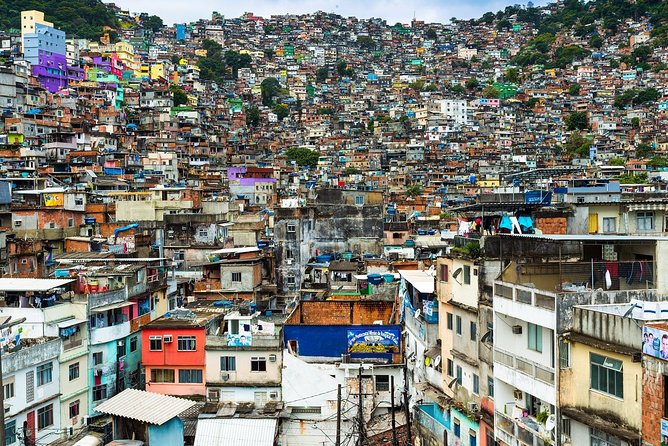
Uncover the complexities of life in Rocinha Favela, Latin America’s largest favela, during this 3-hour educational tour.
Guided by a local, you’ll navigate the vibrant community, engage with its residents, and delve into the rich history of Rocinha’s establishment. This tour is more than sightseeing – it’s an opportunity to gain a profound understanding of the economic and political factors shaping Rio’s society.
It was not like what you see in the movies you really got a feel for how the other half of Brazilian life goes on. — TY (READ MORE REVIEWS )
With round-trip transportation from Rio hotels included, this Rocinha favela tour is a convenient and insightful exploration of a side of Rio often unseen by visitors.
The History of Rio Favelas

But before you book your favela tour in Rio de Janeiro , it’s best if you know a couple of key things, like the history behind Rio favelas.
Favelas first appeared in the 19th century, built by displaced soldiers from Bahia who named them after a plant native to that region which irritates the skin and grows freely in the Bahian shantytowns. Favelas were later occupied by fugitive and then freed slaves, earning them the early nickname bairros africanos or African neighborhoods.
These communities were historically low-income and nowadays suffer from the stigma of being associated with the drug trade and violence. However, roughly 23% of Rio’s inhabitants, around 1.5 million people, live in favelas.
But they are also known as hives of creativity. Samba was invented in a favela, and so was pagode. Favelas are also home to culture and art, such as the moon sculpture in Providência, the Maze cultural space in Tavares Bastos, and the murals that line the walls of Cantagalo.
Are Favela s safe?
But what about favela safety? Are favela tours safe? The answer to that question depends on the audience. For many people living in these communities, violence is a real and present danger, whether it be from warring drug gangs or the military police.
For tourists, the answer is quite different . When tourists talk about favelas, they mean Santa Marta, Vidigal, and a few others in the south zone of the city. These only make up around 2% of the total of Rio’s favelas.
These communities, such as Santa Marta and Vidigal, are Rio’s so-called safe favelas. Both have undergone drastic processes of urbanization and even gentrification, with poorer residents no longer able to afford to live there.
Santa Marta Favela

Santa Marta, in the neighborhood of Botafogo, became famous when Michael Jackson filmed his music video for “They Don’t Care About Us” there in 1996.
Since then, it has been visited by a number of celebrities, including Madonna, Beyoncé, and Alicia Keys, as well as being used as a film set for the fifth installment of the Fast and Furious film franchise.
Vidigal Favela
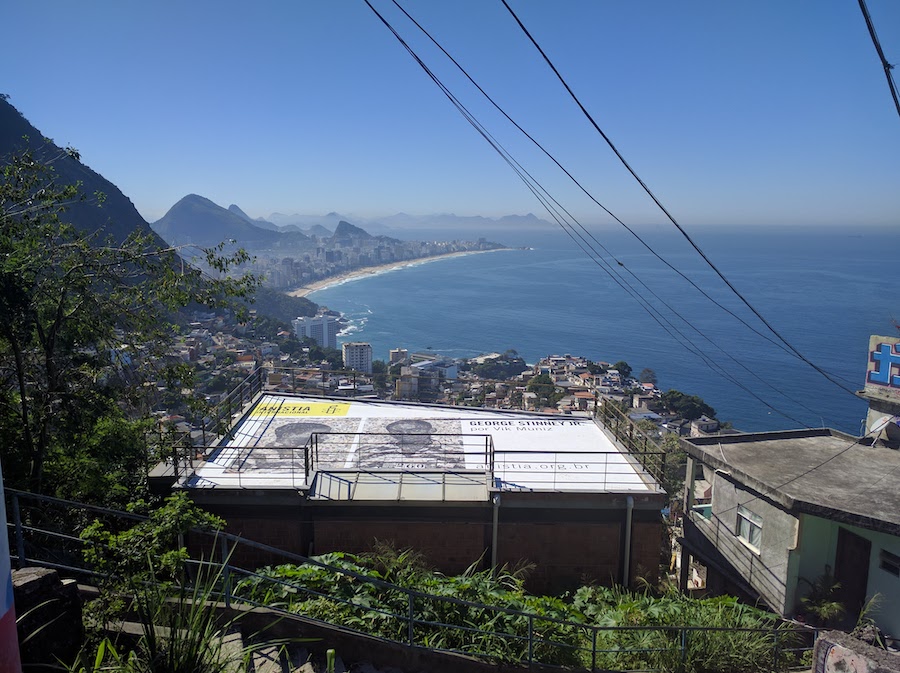
Vidigal, on the slopes of Morro Dois Irmãos and in between the swanky neighborhoods of Leblon and São Conrado, has also undergone significant urbanization and gentrification since the 2000s, with its superb views of the city and privileged location driving up the price of real estate. There is no longer any significant drug dispute there, and one of the biggest industries in these areas is, in fact, favela tourism.
Rocinha Favela
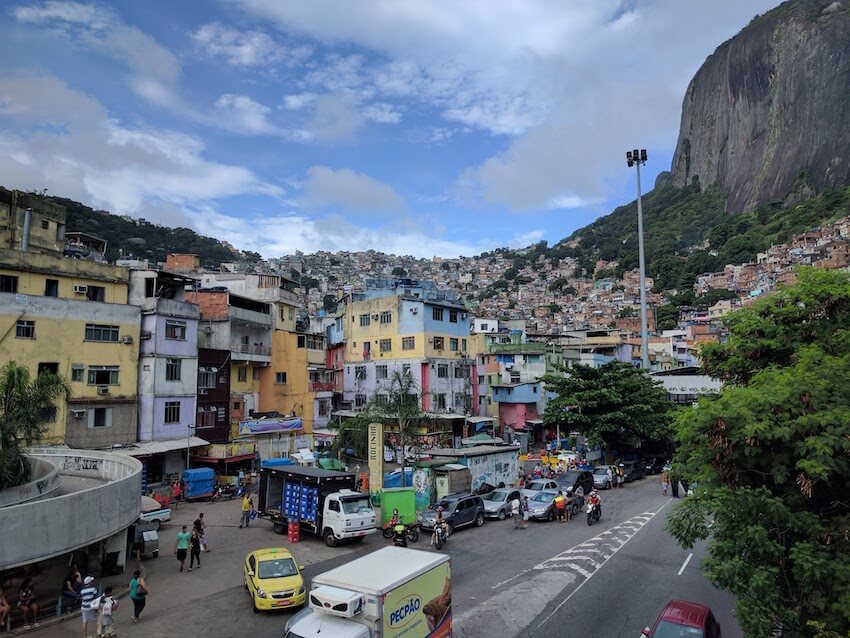
Rocinha Favela, Latin America’s largest favela , is a vibrant community nestled between the districts of São Conrado and Gávea . Home to around 200,0000 thousand residents, Rocinha’s narrow alleyways and multi-tiered buildings paint a vivid picture of life in Rio’s urban fringe.
Despite its socioeconomic challenges, Rocinha boasts a resilient community spirit and a thriving cultural scene. Its streets are alive with music, food stalls, and local businesses, reflecting the industriousness of its inhabitants. Rocinha is a testament to the stark economic disparities in Rio, yet it’s also a symbol of resilience, community strength, and the vibrant culture of Brazil’s urban spaces.
Why do some people disagree with Favela tours in Rio?
Some people believe that favela tours in Rio, or poor neighborhoods, can harm the communities. They worry about poverty tourism , saying it treats people like exhibits and can take advantage of them. They argue that some tours just let visitors gawk at the residents instead of promoting a true cultural exchange, which can upset the people who live there.
Critics also say that favela tourism can shock visitors and make them see the communities in a bad light. This criticism is especially aimed at companies not based in the favelas, as they might not care about showing the good sides of these communities or explaining the unique challenges and benefits of living there. As a result, these favela tours in Rio might spread negative ideas about favelas worldwide.
How to Choose The Best Tour Operator

Local people and tour operators have capitalized on people’s fascination with Rio de Janeiro’s favelas, and in Santa Marta, Rocinha and Vidigal they run a huge number of tours around the community, claiming they offer the reality of the slums and an enriching cultural experience.
Unfortunately, many of these tours can seem like sightseeing trips for people to see how less fortunate folks live. But if you do want to go on one of the favela tours in Rio mentioned above, there are specific things that you should take into consideration when choosing a tour.
1. Choose a Local Operator
A company that is based within the favela itself and only employs local residents offers one of the most sustainable ways of doing a tour. Guides from outside the area are not able to speak authentically for the inhabitants about life within the favelas.
Local guides are also able to delicately advise tourists on etiquette to ensure their visit isn’t too disruptive. This includes preventing photography which might include people who would not appreciate it.
This in-depth knowledge, tact and respect is what sets apart the best companies and is one of the most important aspects in minimizing the degree to which a tour becomes an annoyance for the locals.
2. Community Impact: Who benefits from Favela tours in Rio?
Favela tourism can be beneficial for the communities it touches. Many of the tour companies were founded within the favela itself and only employ guides that live there. Whilst this increases the safety and authenticity of the tours, it also ensures that the money is used to boost the local economy.
Increased exposure to the daily lives of the thousands of people that call favelas their home helps to dispel the myth propagated by the media that they are constant warzones to be avoided at all costs.
3. provide Educational Value
Beyond just sightseeing, a tour should provide a deep understanding of the favela’s history, culture, and the socio-economic dynamics that shape the community. It should cover the establishment of the favelas, their evolution over time, and the challenges they face today.
The tour should also highlight the resilience, creativity, and community spirit that thrive amidst these challenges. By fostering understanding and empathy, the tour can help dispel stereotypes and misconceptions about favela life.
4. Safety Concerns
Make sure to only book a tour led by experienced guides who are familiar with the area. They know the local customs and rules and can navigate the intricate layout of the favela, ensuring the tour avoids any potential areas of concern.
A reputable tour operator will prioritize guests’ safety, provide clear instructions, and address any concerns before the tour. It’s also advisable to read previous guests’ reviews to ensure the operator has a strong track record of safety.
Remember, safety also involves respecting the community’s norms and privacy to ensure a positive and respectful interaction between visitors and residents.
5. Smaller Group Size
The size of the tour group can significantly impact the quality of your experience during a favela tour. Smaller groups tend to offer a more intimate and personalized experience. With fewer people, you have more opportunities to interact with your guide, ask questions, and gain deeper insights.
It’s also less intrusive to the local community , reducing the feeling of being a spectacle. Additionally, smaller groups are more manageable, allowing guides to ensure everyone’s safety and comfort.
Warning: Avoid jeep Tours
On the other end of the scale, it is wise to avoid the controversial favela jeep tour companies, which ferry visitors through the favelas in safari jeeps. Not only are they almost exclusively based outside the favelas, but they also align the visit with adventure tourism.
Aside from being sensationalist, this has the potential effect of making residents feel like they’re in a zoo. These tours are satirized by the Rio-based comedy group Porta Dos Fundos in this video entitled ‘Poor’.
Favela Tours in Rio: Frequently Asked Questions
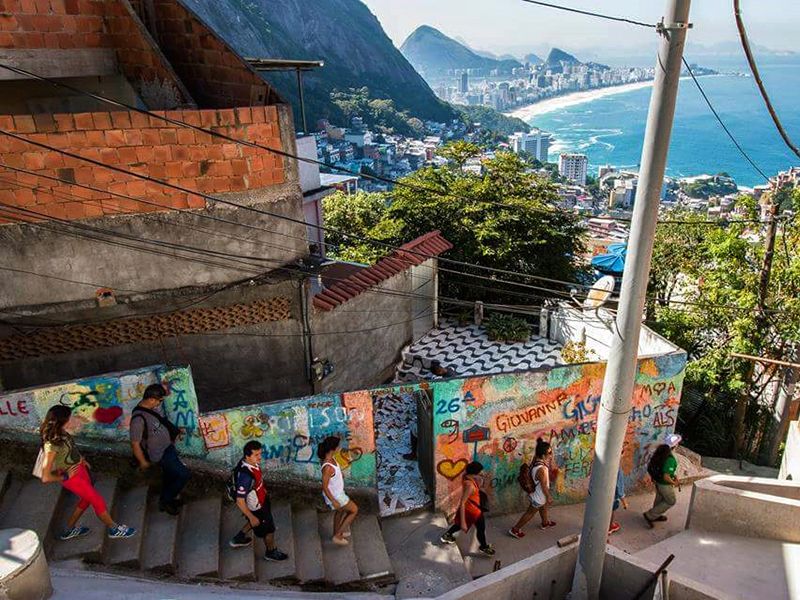
Is it safe to visit favelas in Rio?
Yes — it’s generally safe to visit favelas in Rio, especially with a guided tour. These tours are typically led by experienced local guides who understand the community and its dynamics.
However, like any urban area, favelas can have safety concerns, so it’s recommended to always be respectful, stay aware of your surroundings, and follow the guidance of your tour leader. It’s also advisable to choose a reputable tour operator with positive reviews regarding safety.
Which favela is best to visit in Rio de Janeiro?
Rocinha, being the largest favela in Brazil , is often recommended due to its vibrant culture and stunning views.
Vidigal is also popular, thanks to its friendly atmosphere and the breathtaking hike to the top of the Two Brothers Mountain.
For a cultural immersion, Santa Marta offers colorful buildings and street art, making it a favorite among visitors. Always choose a reputable tour for the best experience.
So the best favela to visit is a toss-up between Rocinha, Vidigal, and Santa Marta — depending on what you are looking fro.
Do people take guided tours of favelas in Brazil?
Yes — many people opt for guided tours when visiting favelas in Brazil. These tours are led by experienced guides, often locals who have a deep understanding of the community’s history and culture.
Guided tours not only provide important context and insights but also ensure visitors navigate these areas safely and respectfully.
They can also often contribute to the local economy, supporting community projects and businesses. Always opt for a tour that prioritizes ethical practices and community respect.
Is it safe to visit Rocinha favela?
Visiting Rocinha is generally considered safe when done responsibly, particularly through a guided tour.
These favela tours in Rio are conducted by experienced guides who are well-versed in the community’s dynamics. However, as with any urban area, it’s important to stay alert, follow the guide’s instructions, and respect local customs.
What favelas to avoid in Rio?
There are around 600 favelas in Rio de Janeiro. However, many of them, particularly those located outside of the Zona Sul (South Zone), are less frequented by tourists and may not be as prepared for visitors.
For safety and to respect the local communities, it’s not generally recommended to visit these favelas, specifically ones located in the North Zone of Rio de Janeiro. The Rio most dangerous favela are usually the ones in the North Zone.
Which favelas are the safest to visit?
When considering safety, the favelas in Rio de Janeiro most commonly visited by tourists are Rocinha, Vidigal, and Santa Marta .
These communities are more accustomed to visitors and often offer guided tours led by local residents or individuals with deep knowledge of the area.
These favela tours in Rio are designed to respect the community’s privacy and dignity while also providing a safe and enriching experience for tourists. However, safety can vary, so it’s always advisable to do research, read reviews, and choose a reputable tour operator.
Final Thoughts: Favela Tours in Rio
Favela tours in Rio de Janeiro, Brazil are not for everyone, but they offer vital insight into the city’s diverse culture and social fabric. When done with consent, respect, and a knowledgeable tour guide, these tours provide a deeper understanding of the living conditions in favelas.
Approached with an open mind, these tours can shed light on the realities beyond media portrayals, revealing the resilience and vibrancy within these communities. Becoming a key part of any Rio de Janeiro city tour, they offer unique perspectives often overlooked.
However, the choice to partake in a favela tour in Rio should be considered carefully, ensuring it’s done ethically and responsibly. In essence, if approached with the right attitude, favela tours in Rio can significantly deepen your understanding of this multifaceted city.
Yvonne Ivanescu, founder of Now in Rio, is a writer and editor with a decade of experience. Passionate about storytelling, she shares the magic of Rio with the world.
Similar Posts
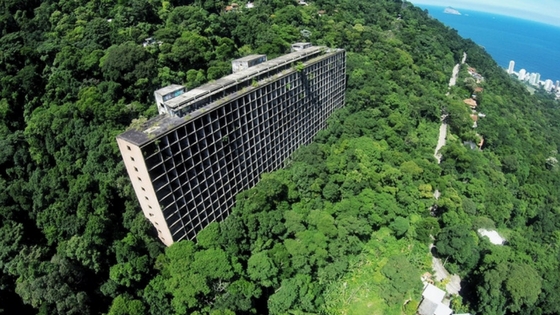
The Abandoned Gavea Tourist Hotel In The Rio Forest
HAVE YOU HEARD OF THE ABANDONED HOTEL IN RIO? Deep in the heart of Rio, hidden in the forest…

30+ Best Brazilian Foods (And Where To Find Them)
Brazil may not be well known on the global culinary scene, but for those in the know, the country has some real gastronomic gems. Here are 30 foods that you really should try when you’re in Brazil

The Complete Guide To The Christ The Redeemer
Visiting Christ the Redeemer? To get the most out of your trip to Christ the Redeemer, here is a complete guide to visiting this must-see landmark.
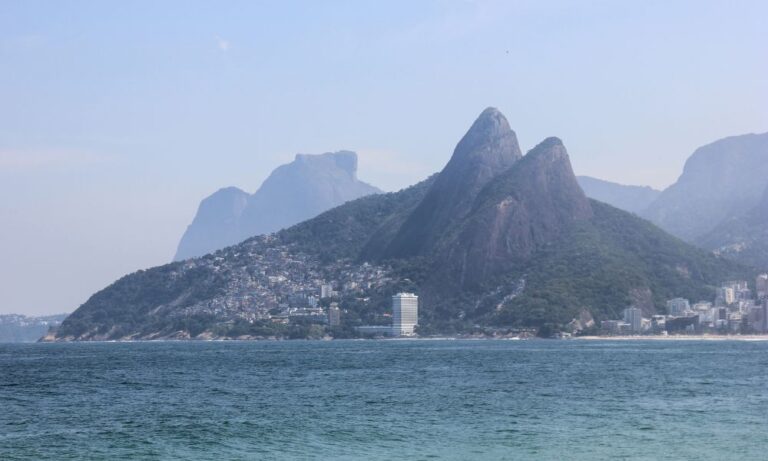
Hiking Morro Dois Irmãos: A Complete Guide
The lowdown on everything you need to know about hiking the Morro Dois Irmãos in Rio de Janeiro, including the best tours to take you there.

Feijoada: A Complete Guide to Brazil’s National Dish
Every country has a dish that represents its unique culinary heritage, and for Brazil, it is undoubtedly the feijoada. But where did it come from and what is it made of? Let’s explore the history of Brazil’s national dish.
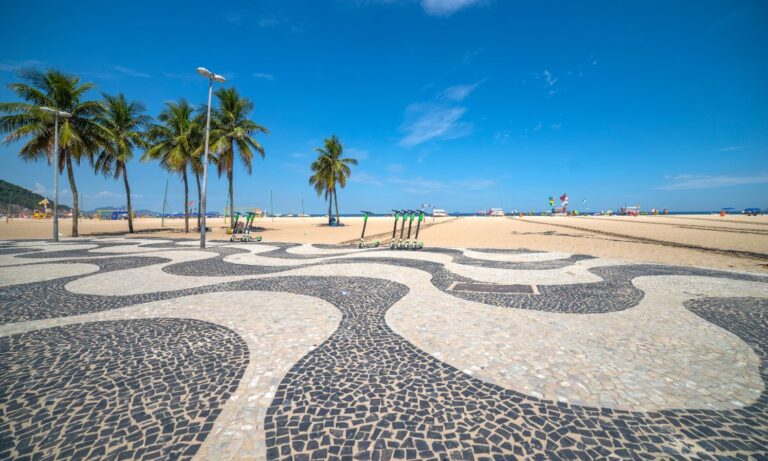
20 Best Beaches in Rio de Janeiro (Plus Some You Haven’t Heard Of)
Here are some of the best beaches in Rio de Janeiro, including some off-the-beaten-track beaches that will show you a different side of Rio.
Leave a Reply Cancel reply
Your email address will not be published. Required fields are marked *
This site uses Akismet to reduce spam. Learn how your comment data is processed .
© 2024 Now in Rio | Privacy Policy | Disclosure Policy | Terms & Conditions Now in Rio is a participant in the Amazon Services LLC Associates Program, an affiliate advertising program designed to provide a means for sites to earn advertising fees by advertising and linking to Amazon.com.
Brazil favelas: what you should know

Mar 15, 2023 • 6 min read
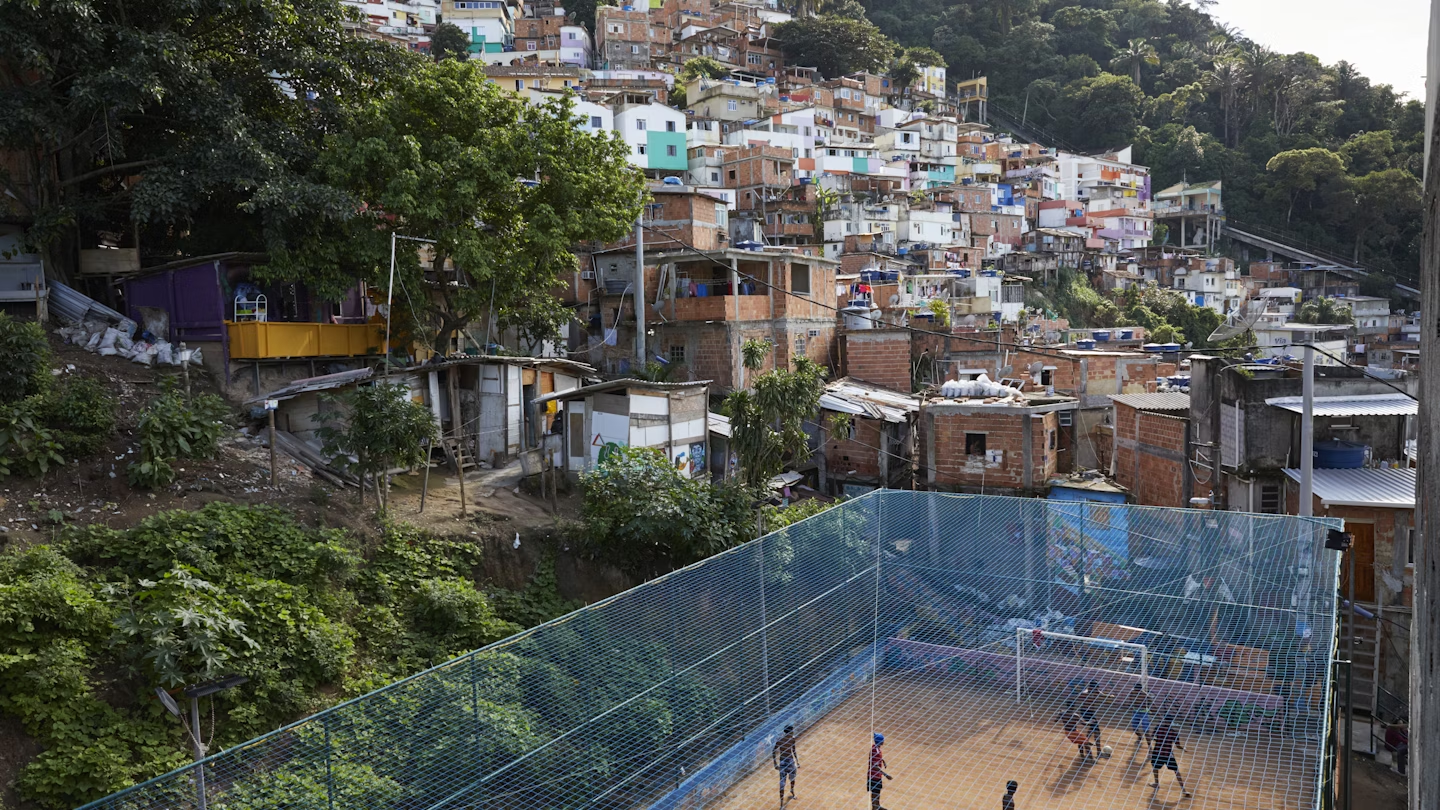
Favelas are more dangerous than the rest of the city, but they're also creative and cultural hubs © Tom Wilde / Getty Images
Most middle or upper class Brazilians will warn you off from visiting favelas. They're too dangerous, they'll tell you. It's too risky. Then the question will inevitably follow: why would you want to go to one anyway?
Slum tourism is a tricky subject. Visiting neighborhoods just to gape at residents is akin to visiting a human zoo. It shouldn't be done.
Visiting a community to better understand the lives of the people who live there, however, or to interact and exchange with them, to celebrate their unique culture and economically support local ventures or social projects – that's the sort of positive impact tourism is supposed to have on the world.
Maybe visiting a favela in Brazil isn't such a bad idea after all. Here are a few things you should know if you decide you go.
Understand the culture
Tourism can be an enriching exchange that valorizes the unique cultures that have grown out of socially marginalized zones, but the tendency to focus on the risks can easily diminish the importance of an area's contribution to society.
Case in point: favelas are more dangerous than the rest of the city, but they're also creative and cultural hubs of the country, producing the best sambistas , rappers and funkeiros , along with top artists, athletes and entrepreneurs.
According to Micael Amarante, who worked for the city of Rio as part of the UPP favela pacification project when it was first introduced, "easily the most relevant culture in Brazil today is favela culture." But that doesn't mean living in a favela is all rainbows and unicorns. Creativity is often born of necessity, and it's true that life in favelas can be quite difficult.
Ever wonder what it's like to live in a favela? Check out Carolina Maria de Jesus' celebrated autobiography, Quarto de Despejo - Diário de Uma Favelada , which gives a detailed account of day-to-day life in a favela in São Paulo. Although the book (which has been translated into 13 languages) is from the 1950s, Jesus' account of the realities of favela life is still very true today.
Local tip: A better understanding of both the positive and negative aspects of life in a favela will enrich your visit and help you to connect with local residents.

Know the rules
Even with the hardships, favela residents – like all Brazilians – are generally warm and welcoming. However, there are a few rules you should follow if you decide to visit.
Know where you can and can't go
Figure out which areas are safe. Some streets, for example, are to be avoided, as they're where human trafficking takes place. If you're told to stay away, do yourself a favor and stay away.
Always go with someone who knows
It's easy to get turned around in the labyrinth-like streets, so make sure you arrive with a guide, be it a local tour guide or a friend who works at a social project.
If you ever get lost or are unsure where to go, tell a resident who you are, who you're with and why you're in the neighborhood. Once the locals know your purpose, they'll help you get where you're going without a hassle.
Ask before you click
It's generally OK to take pictures in favelas, but avoid snapping shots that show someone's face unless you've asked for – and received – permission. In some favelas, the controlling gangs don't want any photos taken; in others, residents can be prosecuted by the police if even a minor discretion, such as smoking weed or underage drinking, is caught on film.
Now that we've got the rules down, here is a short list of ways to experience favela culture in Brazil.

1. Vidigal e Chácara do Céu
Sandwiched between the absurdly expensive neighborhoods of Leblon and São Conrado in Rio de Janeiro sits the well-known favela Vidigal and its little brother Chácara do Céu. Their brick and concrete block houses creep up the side of the iconic Dois Irmãos (Two Brothers) mountain, offering expansive views of Ipanema, Leblon , the Lagoa and the Cagarras Islands.
Its privileged location made Vidigal a magnet for tourism, with bars, party spots, restaurants and hostels popping up across the hillside. Foreigners, including David Beckham and Madonna, bought property, and a luxury hotel was even built on high (yes, we know, there are two sides to that argument).
Some of the top attractions are Alto Vidigal , a party space situated at the top of the hillside with breathtaking views; its neighbor Bar do Lage, a bar and restaurant with the same spectacular view; the Italian-South American restaurant Flor do Céu in Chácara do Céu (reservations only); the theater group Nós do Morro (We of the Hillside); Sitiê Parque Ecológico (Sitiê Ecological Park); and the trail to the top of Dois Irmãos mountain.
2. Morro da Mangueira
The favelas of the North Zone of Rio are certainly less visited and more risky than those of the South Zone. True lovers of samba, however, will need to add one to their itinerary: Morro da Mangueira, home of Rio's first samba school.
Samba schools are the organizations that put on Rio's famous Carnival parade, and the GRES Estação Primeira de Mangueira, as it is formally known, is one of the most famous samba schools in existence. Carnival and samba are the lifeblood of many Brazilians.
“[Visiting a samba school] isn't all clichés of Carnaval - it's an opportunity to experience our culture, which is a true work of art," Mangueira tourism guide Monica Bertazzolo said in an interview with Globo .
If you're in Brazil during Carnival season, you can also take tours of or see technical rehearsals at the Cidade de Samba (City of Samba), the complex where the samba schools prepare their parades.

3. Morro da Babilônia e Chapéu Mangueira
At the far end of Copacabana Beach , just behind the small residential neighborhood of Leme, sit the favelas Morro da Babilônia and Chapéu Mangueira, two relatively safe communities blessed with peaceful ocean views, Atlantic rainforest hiking and some of the best bar food in the city .
The tourist itinerary includes a stop at the 140m-long mosaic Mural Babilonia, a guided hike along the Circuito do Morro da Babilônia to Pedra do Urubu (Vulture Rock), a sunset drink at the ocean-view terrace of Estrelas da Babilonia (if you don't mind climbing the stairs to get there) and finally a stop at Bar do David , twice voted the second-best bar food in the city in the Comida di Buteco competition.
4. Paraisópolis
The second-largest favela in São Paulo, Paraisópolis has close to 100,000 residents – including Estevão Silva Conceição, known as the Brazilian Gaudi for his unique architectural stylings.
In 2019 Conceição's house was part of a project called Circuito Paraisópolis das Artes – an artistic tour of Paraisópolis that also included the Ballet Paraisópolis, Biblioteca BECEI (BECEI Library) and Casa de PET, a house constructed from green plastic PET bottles by Sr Antenor, another artist from the community.
Unfortunately, the COVID-19 pandemic put an end to the project, but tours highlighting the artistic prowess of Paraisópolis' residents are still organized by local guides and the community association.
Cultural immersion
Favela culture doesn't just exist in favelas. If you want to know more but feel uncomfortable with the risks, head to Lapa in Rio and check out a carioca funk show at the Fundição Progresso or visit a traditional Roda de Samba (like Pedra do Sal).
In São Paulo, stop by the newly inaugurated Museu de Favela for a deep dive into this epic street culture that's the heartbeat of Brazil.
Explore related stories

Tips & Advice
Mar 1, 2024 • 9 min read
Don't get overwhelmed by the scale of Brazil – get organized! Here are our top 10 favorite places to visit in this South American sensation.

Feb 1, 2024 • 7 min read

Dec 27, 2023 • 8 min read

Dec 27, 2023 • 4 min read

Nov 27, 2023 • 7 min read

Nov 18, 2023 • 7 min read

Nov 13, 2023 • 6 min read

Nov 10, 2023 • 4 min read

Nov 9, 2023 • 4 min read

Nov 8, 2023 • 5 min read

Log in with user name:
Log in with social media:
Get FREE email communications from Fodor's Travel, covering must-see travel destinations, expert trip planning advice, and travel inspiration to fuel your passion.
Rio de Janeiro
- Things To Do
- Restaurants
- Neighborhoods
- Travel Tips
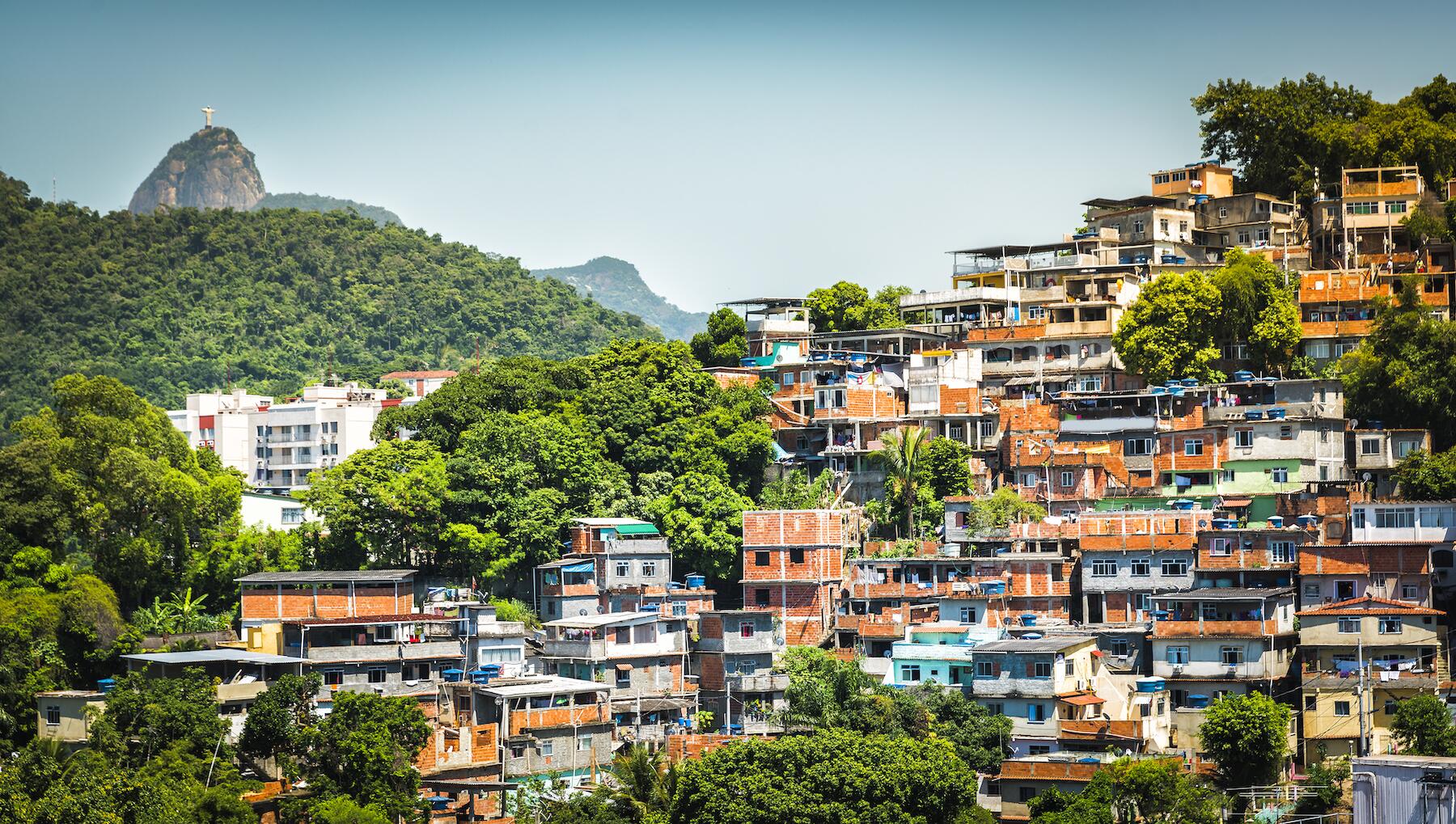
Rio’s Favela Tours Are Back, But Are They Ethical?

The return of tourism in Rio de Janeiro has revived a debate about the ethics of one of its most popular and controversial touristic activities.
Márcia Souza is guiding me through Rio de Janeiro’s Museu de Favela (MUF) when suddenly, a woman’s face bursts through an opening in one of the museum’s paintings. She exchanges a warm greeting with Márcia and proceeds to hang her washing out of the window. The painting, which covers the entire facade of this woman’s house, is a mural chronicling the first wave of immigrants who settled in her favela neighborhood, and she is its guardiã. MUF isn’t just a museum about favelas; it is a favela.
Prior to the pandemic, Márcia and other “cultural mediators” from MUF would guide tourists through a circuit of murals painted onto houses in the three favela communities that cling to Rio’s Cantagalo Hill ( Cantagalo, Pavão, and Pavãozinh o ) . This open-air art exhibition is a novel twist on the favela tour experience, but its momentum was halted when the coronavirus brought the world to its knees. Neglected by the government, favela residents drew on all their characteristic resourcefulness and resilience to save themselves from the double threat of disease and starvation. Brazil is getting back to its feet, but with the return of the tourists has come the return of the favela tours, reigniting a longstanding debate as to whether such tours are empowering cultural exchanges which benefit the communities on show or voyeuristic and exploitative human safaris.
Top Picks for You

Recommended Fodor’s Video
The problem with favela tours.
Favela tours—or slum tours as they are known in other parts of the world—might seem a relatively recent trend in tourism, but the idea of poverty being marketed as a touristic experience has its roots in 19th-century England when wealthy Victorians would descend upon London’s underprivileged East End to gaze, ogle, and gawk at the Other.
“Slumming,” as it was known, was a popular weekend pastime, and it has been argued that these encounters helped to break down class divides and awaken a social conscience within the Victorian elite, which led to campaigns that brought improvement in the living conditions for England’s urban poor.
Similar arguments are put forward by marketers of favela tourism today, who claim that profits from their tour support development in the favela by bringing vital income to the community. These arguments are echoed by favela tourists themselves, who want to feel like they have “made a difference” in the lives of favela residents.
This in itself is problematic, reproducing colonial-era binaries of civilized, benevolent saviors from the developed world and helpless, passive actors in the Global South. It’s impossible also to ignore the heavily racialized nature of this encounter: most people living in Rio’s favela are Black, while the overwhelming majority of participants on favela tours are white.
What’s more, several studies have shown that the impact of slum tourism on the local economy is negligible. At best, profits tend to stay in the hands of a small number of local entrepreneurs, and at worst, the revenue goes to non-local operators who run the tours as a business. Some tours are organized by non-profit, community-based organizations like MUF, who use the money to fund important cultural and leisure projects, but the question remains whether there might be value in favela tourism beyond economic benefits.
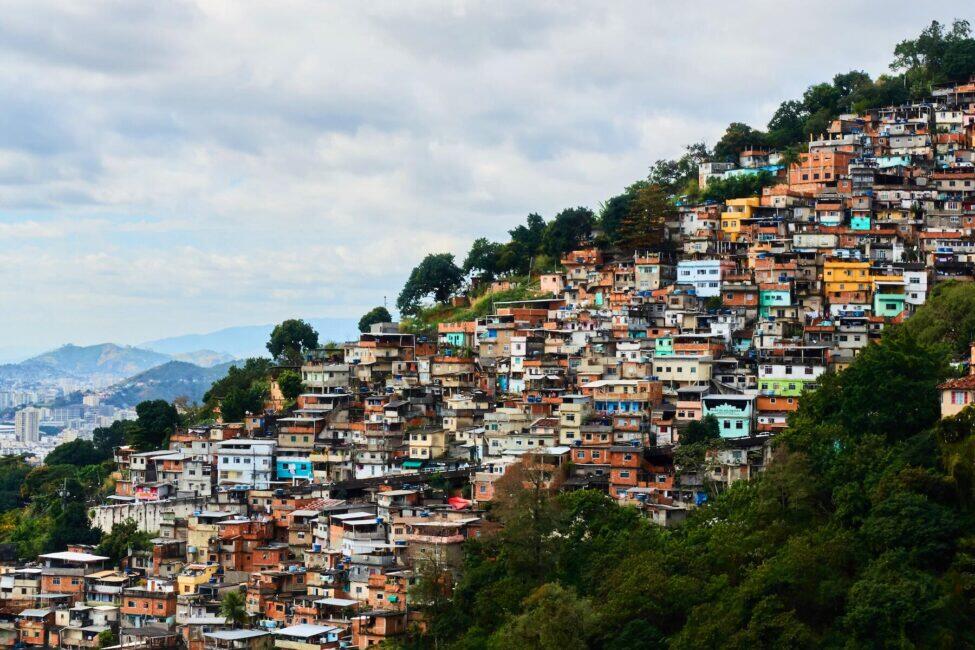
Challenging Preconceptions
Fernando Emíro, who runs historical tours through Rocinha , Rio’s largest favela, believes that a favela tour should challenge, rather than reproduce, problematic narratives. “Our stories don’t celebrate gunfights or glamour, but the ordinary lives of working people concerned about their families and their friends,” he explains. “The problem is that there are tourists who aren’t interested in an ethical tour. They want to know about the armed violence and the drug trafficking, and these become the commodities that businesses package and sell to them.”
Fernando likens these tours to “human zoos,” exploitative and dehumanizing by their very nature. Such tours are understandingly unpopular with favela residents themselves. Thiago Firmino, an activist from the Santa Marta favela, explains how his community came together to resist efforts from a tour operator to host Jeep tours through their neighborhood. These controversial “poverty safaris” are well-established in other favelas and only reinforce harmful representations of favela life as places of danger and disgrace.
“Tourists arrive with misconceptions and opinions about the favelas,” says Thiago. “My mission is to break down this attitude that favelas are only about drug trafficking.” Thiago runs his own tours , which he calls an “open-air class.” Like Fernando and Marcia at MUF , Thiago’s tour celebrates his favela’s rich culture and history rather than glorifying drug-related violence.
There is evidence to suggest that favela visits can be successful in altering tourist perceptions. A 2013 survey showed that 64% of non-Rio residents who had never been to a favela had an unfavorable opinion about them, mostly informed by mainstream media and movies. Of the non-Rio residents who had visited a favela, this number dropped to 29%, and 44% had a positive attitude towards favelas. But the ease with which tourists accept their guides’ portrait of the favela might not necessarily be a good thing.
The Myth of Poor-but-Happy
By breaking down some stereotypes, well-meaning favela tour guides can run the risk of tapping into others. Incomplete representations of life in the favela that gloss over issues such as poorly built housing, open sewage, and employment discrimination in favor of an upbeat poor-but-happy narrative can trivialize, romanticize, and ultimately depoliticize the poverty experience by ignoring the structural factors that have caused and maintain these living conditions.
As the academic Dr. Melissa Nisbett puts it, “Slums are the result of rampant capitalism, inadequate urban planning, and a lack of investment in essential public services,” but framing them as hives of creativity and contentment “legitimizes social inequality and diverts attention away from the state and its responsibility for poverty reduction.” Such discourses can inhibit development in the favela by drowning out the voices calling for much-needed social change.
Choosing an Ethical Favela Tour
Navigating the complexities and contradictions in favela tourism requires a delicate balancing act for tour operators. Tours that place too much emphasis on the hardships faced in the favela will be distasteful and exploitative. Those that side-line these issues altogether risk normalizing poverty to the point where it becomes acceptable. But a middle ground does exist, and a handful of favela tours beyond the big companies claim to have found it.
The stories depicted on the MUF’s memory circuit tell the story of the favela resident’s struggles for survival as well as their triumphs. What’s more, the community has been engaged as important stakeholders in the project: older residents were consulted on the subject material for each mural based on their own memories from life in the favela, and oral testimonies passed down by their parents.
Likewise, Fernando and Thiago might choose to portray their neighborhoods in a positive light, but they are also both local activists who use their platforms to fight for improvements in the provision of basic needs. They emphasize the importance of local, favela-born tour guides, something that isn’t always a given, as I found out when I joined a highly rated favela tour on Trip Advisor to find that my guide was a gap-year student from France.
Favela tourism can be ethical, but only where it is organized by activists, not entrepreneurs, who are working to benefit their communities. They should engage the community without exploiting them, allowing residents to take ownership of the narrative. And they should give an honest representation of the challenges of favela life that aren’t divorced from the political factors that have made these conditions so. These tours are out there, but they might not be found on the first page of Trip Advisor. In an industry where inequality is the product, not all tours have been created equal.

Savvy Travel Advice
Slum Tourism: 17 Responsible Travel Guidelines for Travelers
Last updated: July 12, 2022 - Written by Jessica Norah 10 Comments
Slum tourism is defined as the practice of travelers visiting poor urban areas, typically in the Global South, to view the impoverished conditions and understand more of the lifestyles of local inhabitants. It is also known as poverty tourism, township tourism, community tourism, and other terms.
Tourism is often used to help alleviate poverty, but in this case, poverty is also the attraction. It is a controversial tourism practice but one that has become increasingly popular. Slum tours are particularly popular in South Africa, Brazil, and India. It was estimated by Frezel et al. (2015) that over 1 million tourists take a slum tour each year.
The goal of this article is to provide information that will be useful to both those interested in learning about the practice of slum tourism as well as those travelers who are considering taking a slum tour.
We begin with providing information on the history of slums and slum tourism, the current state of slum tourism, the potential pros and cons of the practice, and the ethical debates around slum tourism. We also provide information for those looking for further resources about the practice. We encourage everyone to do their own research and come up with their own informed opinions on slum tourism.
For those travelers who want to take a slum tour, we propose a set of responsible slum tour guidelines for travelers which were developed based on the research literature, policy papers, and tourism ethic codes. These guidelines are designed for those tourists who plan to take a slum tour and want to do so in the most responsible way possible.
We provide lots of tips and advice for travelers in choosing a responsible tour operator, engaging in behaviors that minimize potential harm and maximize potential benefits to the visited community, and visiting in a safe and responsible manner.
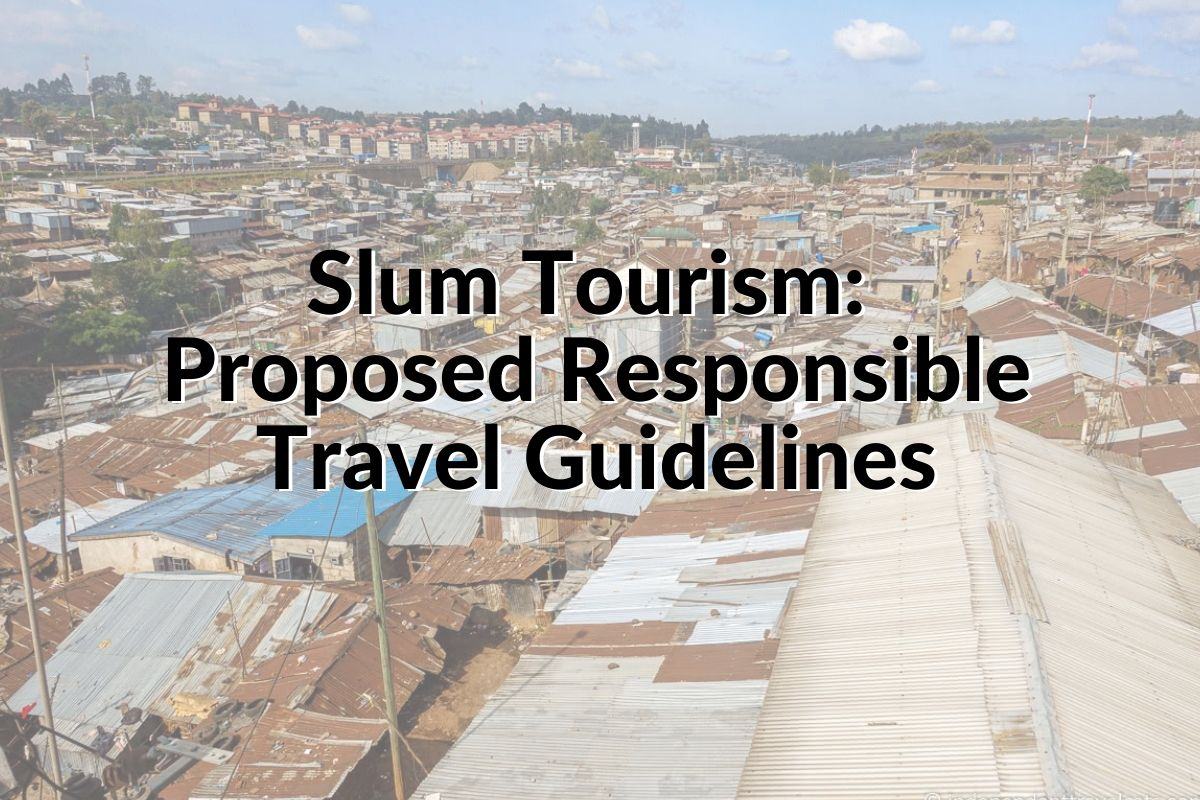
Table of Contents:
Overview of Slum Tourism
This first section gives a brief overview of the history of slums, the evolution of slum tours, the ethical debate on slum tourism, and the research on the topic of slum tourism. We also provide links to further resources for those wanting to explore these topics further.
What are Slums?
The word slum is often used to refer to urban low-income settlements that are characterized by substandard housing and poor human living conditions. They are usually in crowded urban areas, although they can also sometimes be found in suburban areas. There are a lot of different definitions of the term slum, but one of the most recognized by policymakers is the one used by the United Nations.
The United Nations Human Settlements Programme (UN-Habitat) came up with a formal and operational definition for slums to aid in their reporting. They define a slum household as a group of individuals living under the same roof lacking one or more of the following: access to an improved water source, access to improved sanitation facilities, sufficient living area, housing durability, and security of tenure.
The term informal settlement is often used interchangeably, but specifically is defined by the UN-Habitat to mean that the inhabitants have no security of tenure (e.g., don’t have rights to the land, can be easily evicted), may lack basic services and infrastructure, and the housing may not comply with local regulations.
It should be noted that many people, such as the Australian writer Alan Mayne , consider the word slum to be a pejorative and offensive term and argue against its use. He similarly argues against the use of similar foreign terms like favela , ghetto , and bustee which often have the same negative connotations. He doesn’t suggest an alternative term though and notes that “there is no one term that can describe the diversity of disadvantaged low-income settlement types.”
It should also be noted that many residents living in these areas refer to them as a “slum” (or a similar word in their own local language) themselves, and the UN notes that in many developing countries, “the word lacks the pejorative and divisive original connotation, and simply refers to lower quality or informal housing.” However, in general, the word slum has a negative connotation and is not considered a politically correct term in everyday conversation.
Slum is the main term used by organizations, policymakers, and researchers and it is therefore the one used in this article. This is done for the sake of consistency and for the lack of a better term. But one should be aware that it can often be perceived as an offensive term, and travelers should be aware of the language used in the area in which they are visiting.
Although crowded impoverished areas have existed for hundreds of years, modern urban slums are generally said to date from the beginning of the nineteenth century. The first use of the term “slum” comes from Victorian England in reference to the crowded living conditions of the poor who lived in the alleys of London’s East End.
The first slums began to appear in the early nineteenth century due to rapid industrialization and urbanization, as well as increasing populations, poor urban planning, and discrimination. The first slums occurred in big cities in Europe and North America like London, New York City, Dublin, Boston, and Paris. However, while slum areas can still be found in the Global North, the largest slums of today primarily exist in the developing countries of the Global South.
According to a 2021 report by the United Nations Department of Economic and Social Affairs, about 24% of the world’s urban population resided in slums in 2018. It is estimated that over 1 billion people are currently living in slums or informal settlements. Unfortunately, the number of people residing in slums has been increasing over time in many parts of the world.
The UN notes a number of reasons for the creation and continuation of slums which include rapid rural-to-urban migration, poor policy and city planning, increasing urban poverty and inequality, insecure tenure, and the global economic cycle.

What are Slum Tours?
Slum tours are guided visits to a slum area. Slum tours are generally walking tours led by a local guide, and most take place in cities in the Global South.
Slum tours are called different things in different parts of the world. They may also be called favela tours, township tours, ghetto tours, poverty tours, community tours, cultural tours, etc.
Although many people think that slum tours are a very recent phenomenon, the practice actually dates back to the nineteenth century. According to Frenzel et al. , upper-class British people in the mid-1800s started to take an interest in visiting the slums of London and that this was the beginning of informal slum tourism.
Londoners then began to visit slums when traveling in the cities of the United States and Europe, causing more interest in this behavior. It is believed that the first commercial guided tours of slums began in the early 20th century in the cities of New York City, Chicago, and San Francisco.
Later slums began to develop in the Global South as industrialization and urbanization took place in those countries. However, there was relatively little slum tourism in the Global South for many decades, likely due to safety concerns from travelers and the lack of formal tours.
According to Frenzel (1992 ), the first commercial slum tours in the Global South are believed to date from the early 1990s, taking place in South Africa and Brazil. The first tours in both of these countries surprisingly have political and social justice roots.
Township tours in South Africa were first organized and promoted by the local governments during apartheid (which lasted from approximately 1948 to the early 1990s). These official propaganda township tours (along with cultural villages, museums, etc.) were designed to show government officials and visitors that apartheid policies were working. However, informal township tours also sprung up that were designed to show the social injustices of apartheid.
After apartheid legislation was repealed in 1991 and the first multiracial election took place in 1994, tourism increased in South Africa. The informal township tours that had sprung up during apartheid started to become less political over time and began to focus more on heritage, cultural diversity, and local life.
Today, township tours are popular in several cities in South Africa, including Cape Town, Johannesburg, and Durban. These tours are not only popular with foreign tourists but also attract a significant number of South Africans.
The year of the first commercial favela tours in Rio de Janeiro is unclear but the interest in slum tourism in Brazil was really sparked in 1992. During the Rio Summit in 1992 (United Nations Conference on Environment and Development), some of the conference delegates wanted to visit the favela areas instead of just seeing the popular tourist attractions. So, a tour operator arranged a tour for them to visit Rocinha. Some of the journalists and policymakers wrote about these visits; this made people aware of favelas and caused others to want to visit.
The early visitors to the favelas in Rio were mainly “political tourists” and journalists, but soon regular leisure tourists were also coming. Today, Rocinha is one of the most visited slums in the world and favela tours are one of the popular tourist things to do in Rio de Janeiro.
Where do Slum Tours Take Place?
Slum tours take place in dozens of countries, primarily in the Global South. Three countries that attract the most slum tourism are Brazil, South Africa, and India.
A group of researchers on slum tourism estimated in a 2015 paper that approximately 1 million tourists were taking part in slum tours each year. They noted that about 80% of those tourists are doing so in just two countries: Brazil and South Africa. In Brazil, tourists are mainly visiting the favelas of Rio de Janeiro. In South Africa, tourists are taking township tours in several cities.
As noted in the prior section, the first commercial slum tours in the Global South are believed to have started in the early 1990s in South Africa and Rio de Janeiro, Brazil. These early tours sprung from political and social justice roots. Today these remain two of the most popular slum tourism destinations.
The influence of media and promotion by the local tourism industry have also had a huge effect on where slum tourism is popular. The films Slumdog Millionaire , District 9 , and City of God depicted the slums of Dharavi, District Six, and Cidade de Deus, respectively. These films are often credited with making slum tourism popular in Mumbai, Johannesburg, and Rio de Janeiro.
There are often multiple tour operators offering tours in the most popular slum tourism cities. For example, you’ll find a number of tours options to visit the slums of Soweto in Johannesburg (South Africa), Rocinha in Rio de Janeiro (Brazil), Manshiyat Nasser (“Garbage City”) in Cairo (Egypt), Kibera in Nairobi (Kenya), Dharavi in Mumbai (India), and Langa in Cape Town (South Africa).
However, it should be pointed out that most slum areas around the world receive relatively little tourist interest. For example, although Orangi in Karachi, Pakistan is twice the size of Dharavi and is believed to be Asia’s largest slum area (perhaps the world’s largest), it is not a popular tourist destination. Similarly, although there are hundreds of favelas in Brazil, there are only a handful of them that attract tourist visits.
What are Slum Tours Like?
Every slum tour is different, but in general, they are often walking tours led by a tour leader through a particular neighborhood or slum area.
Slum tours are organized and run by a variety of different types of operators, including private tour companies, charities, and non-governmental organizations. The size of the operators ranges from solo tour guides running their own business to fairly large tour operators that employ a number of guides.
Most slum tours take place mainly outdoors and view the explored neighborhood on foot from the streets. Most include at least a couple of planned stops at local businesses, cultural sites, homes, schools, humanitarian projects, markets, or other points of interest.
Slum areas are all very different. Even slums in the same city can be very different in terms of infrastructure, history, cultural diversity, and level of affluence.
Slums like Soweto and Rocinha, which are two of the most visited slum areas in the world, have more developed tourist services than many other slums around the world. For instance, they offer museums, restaurants, bars, clubs, cultural centers, gift shops, and overnight lodging options for guests. Some evening tours include going to clubs for music, drinks, and entertainment. Soweto even has a 4-star hotel and conference center!
However, most slum areas offer few, if any, tourist services. It is important to remember that many people living in these areas lack access to basic necessities and resources like safe drinking water, electricity, and good sanitation services.
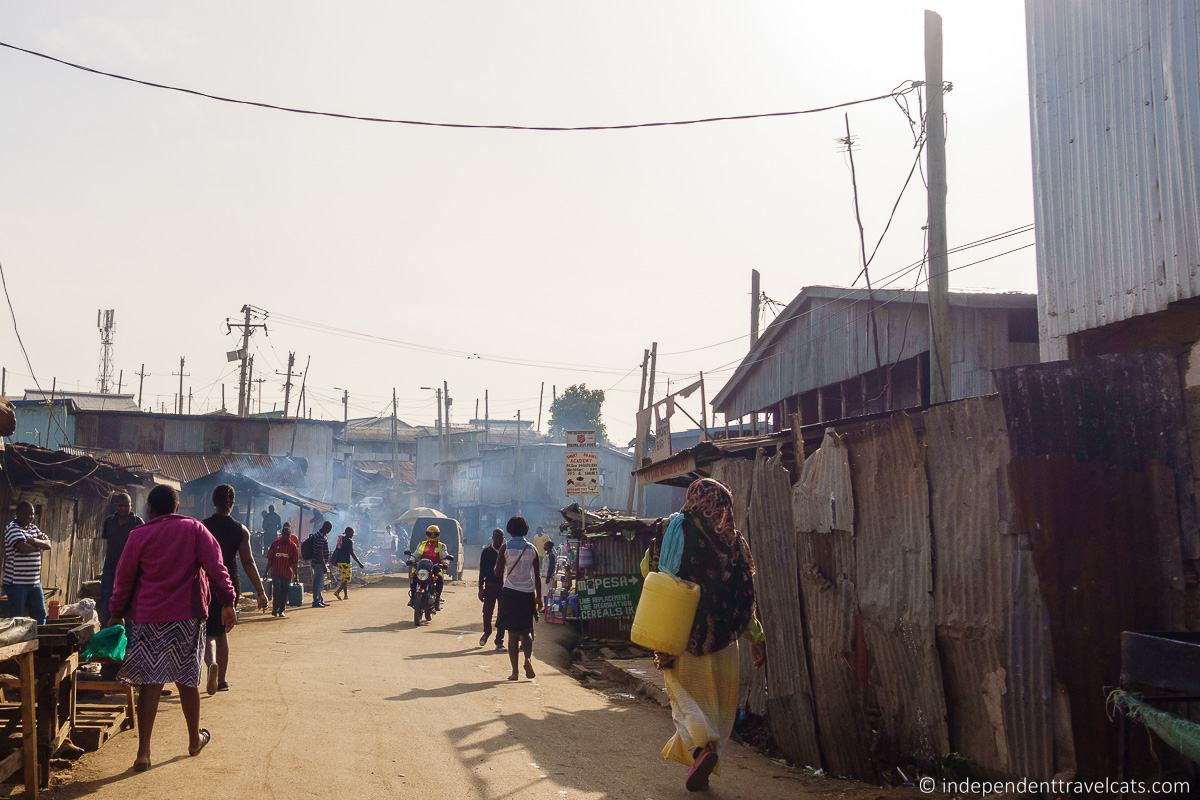
Is Slum Tourism Ethical?
Despite a lot of writings on the subject, there does not appear to be any agreed-upon consensus as to whether slum tourism is ethical or not. Determining whether an activity is morally right or wrong is often more of a philosophical debate than a scientific one.
It is difficult to argue that a walking tour through any neighborhood is inherently unethical. So the ethical arguments are often around tourists’ motivations for taking slum tours, tourists’ behaviors while on tours, the impact of the “tourist gaze” , the feelings of local residents about slum tourism, and the costs and benefits of such tourism on the local community.
It is a complex issue and has been discussed by many researchers, journalists, and others. Just note that many of these opinions, especially those of journalists and bloggers, are coming from people living in developed Western countries, not those actually living in slum communities themselves. We encourage you to read the debates and discussions pertaining to the ethics of slum tourism to make up your own beliefs. You can find some articles online here to get started.
In order to examine whether slum tours are responsible or not, many people look at the potential positive and negative impacts of slum tourism in a particular local community.
Those who support slum tourism often note potential benefits such as reducing stigmatization, increasing awareness, employing local residents, generating revenue for community projects, increasing profits of local businesses, and improving local services, infrastructure, and security.
Those opposed to slum tourism typically note the negative impacts that include the voyeuristic and intrusive nature of the practice, the potential exploitation of local people (particularly children), the problematic practice of using poverty as an attraction, and the limited economic benefits to locals,
A small number of studies have looked at residents’ thoughts and feelings, indicating that most slum residents believe that there are both negative and positive potential impacts of slum tourism. But the attitudes, concerns, and perceptions of residents seem to vary across slum areas.
For example, a study of residents in a Cairo slum area , noted a number of both positive (e.g., donations, employment, improved infrastructure) and negative aspects (e.g., rights and assets being used for tourism, voyeuristic nature of some tours, concerns about human trafficking) related to slum tourism. Although most residents generally had positive attitudes towards slum tourism, they reported there are a lot of barriers to benefiting from slum tourism. The most common barrier they reported to benefiting from slum tourism was actually the high-density population of the slum itself.
The biggest concern many residents have is that slum tourism does not directly benefit them and only benefits a limited number of people in the slum. This is a particular concern for slum areas like Kibera in Nairobi ( Kieti & Magio, 2013 ) where there are few tourism-focused businesses due to limited capacity and investment. So locals can’t benefit from ventures such as selling crafts, meals, and souvenirs to visitors or offering overnight accommodation as residents of other slum areas do. Many residents in Kibera had more negative overall attitudes toward slum tourism and believe that most of the profits go to outsiders.
To learn more about ethics in tourism, you can check out this code of ethics developed by The World Tourism Agency called the Global Code of Ethics for Tourism. They also provide this set of tips for being a responsible tourist to help people make more responsible choices when traveling.
Further Resources on Slum Tourism
We highly encourage you to do your own research on slums, informal settlements, and slum tourism.
One of the best sources for information and research about slums is the United Nations Habitat (UN-Habitat) website. One of the major goals of UN-Habitat is to improve the conditions of slum dwellers around the world. They regularly release data, reports, and information related to slums and their projects.
Cities Alliance is a global partnership fighting urban poverty and promoting the role of cities. One of the main goals is to improve living conditions in existing slums and prevent new slums from forming.
Another organization that provides information on slums and their work on slum rehabilitation is Habitat for Humanity. Other international organizations that do research and work on improving slum conditions are Oxfam and Save the Children.
- United Nations Habitat (UN-Habitat): https://unhabitat.org/topic/slum-upgrading
- Cities Alliance Cities Without Slums: https://www.citiesalliance.org/cities-without-slums-action-plan
- Habitat for Humanity: https://www.habitatforhumanity.org.uk/what-we-do/slum-rehabilitation/
To get a good overview of slum tourism history and research, we recommend the book and literature review by Fabian Frenzel. Frenzel’s work focuses on the intersection of tourism and urban poverty, and he has written several articles and edited a few books on the topic of slum tourism.
- Frenzel, F., Koens, K., & Steinbrink, M. (Eds.) (2012) Slum tourism : Poverty, power and ethics. New York: Routeldge.
- Frenzel, F., Koens, K., Steinbrink, M., & Rogerson, C. (2015). Slum tourism: State of the art. Tourism Review International , 18 , 237-252. doi: 10.3727/154427215X14230549904017
Just note that there are a lot of limitations to the studies on slum tourism. As someone who has published psychological and health services research and has read dozens of these research studies, I find that there is a lack of strong empirical studies in the area of slum tourism. Much of the research relies on small samples, non-random sampling, self-reporting, qualitative data, anecdotes, and retrospective data.
Most of the research on slum tourism is published in tourism journals.
- Google Scholar is a good place to go and search if you don’t have access to a paid research database like Scopus, PsycINFO, or PubMed. Many of the articles listed in Google Scholar are available online for free.
There are studies that examine different issues in specific slums, so if you are interested in a specific slum (e.g., Rocinha, Kibera, Soweto, Dharavi) or geographical region, you can search for that in the research literature.

17 Responsible Traveler Slum Tour Guidelines
If you are planning to take a slum tour, we have come up with a proposed set of guidelines and tips for travelers who want to do so in the most responsible way possible.
Ultimately, we believe the main responsibility in regulating slum tourism and conducting responsible tours lies with the local governments and tour operators. They should strive to ensure that tours are responsible and are designed in a way to maximize the positive impact on local communities while minimizing any negative effects.
However, realistically, we also know that most tour operators respond to the demands and behaviors of the traveler and that government regulations are often lax. The communities themselves often have minimal power. So travelers often have to vote with their wallets in determining what tourist products are available and how they are structured.
Our tips are based on research in the area of slum tourism, the Global Code of Ethics for Tourism, and our personal experience. A strong influence was the proposed guidelines for township tour operators in Cape Town, South Africa that were developed in 2013 by tourism researcher Jeanett Søderstrøm. While those guidelines were specifically proposed for the slum tour operators, we have written a set of proposed guidelines for responsible travelers.
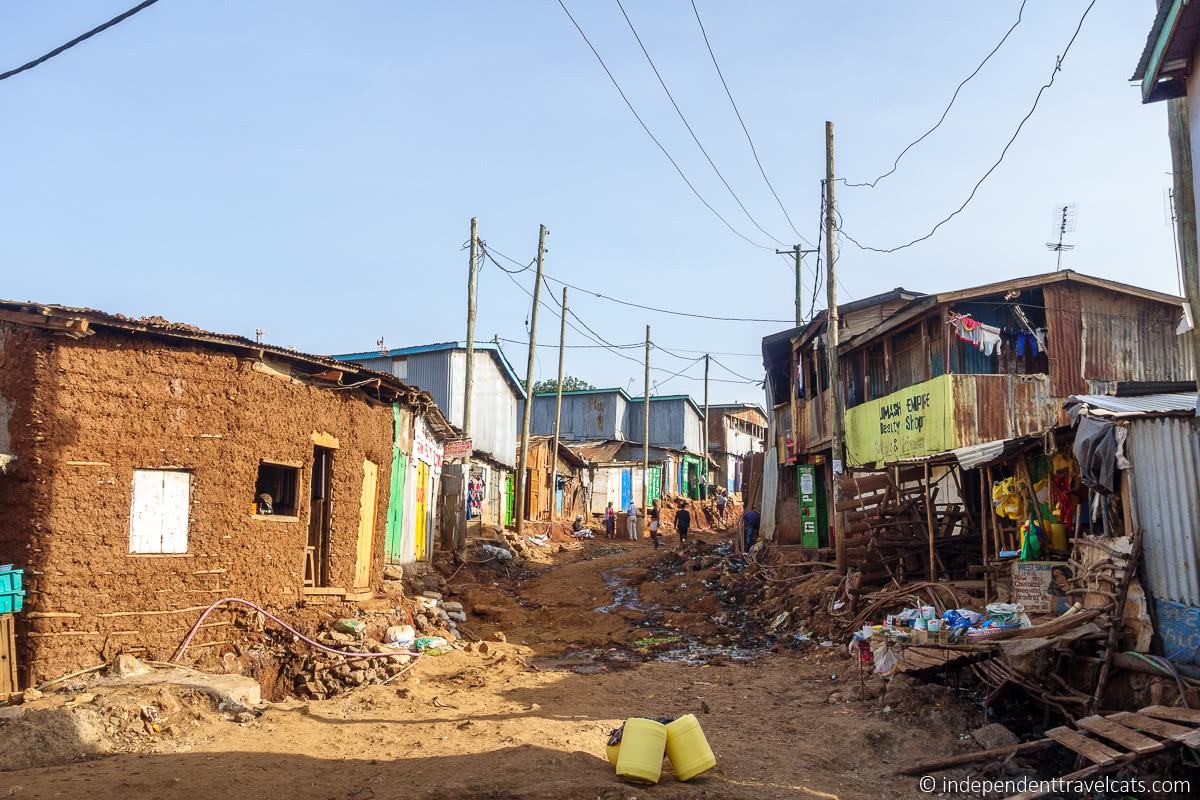

1. Choose a Responsible Tour Operator
The first step is to choose a responsible tour operator. However, this is much easier said than done as it can be hard to identify whether a tour is operated in a responsible, ethical, and sustainable way.
There is no third-party international regulation of slum tours, although there may be local regulations of such tours. So, the best you can do is to read the company’s policies, tour descriptions, and past reviews by travelers who have taken the tour.
There are lots of things to look out for (many are covered in more detail in this post) but here are some things that may indicate a more responsible company:
- The company is locally based and employs local resident guides
- The company focuses on small group walking tours
- The company pays fair wages to guides and compensates any visited households
- The company uses tours to benefit the local community (e.g., profits support a local community project)
- The company provides guidance on tourist behaviors concerning photography, dress, safety, tipping, and home visits
- The company promotes its tours with a focus on learning and the local community rather than on the more voyeuristic aspects of visiting slums
- The company allows tourists the opportunity to support local businesses and projects if they wish
- The company doesn’t promote tour activities that are likely to exploit or cause harm to children, animals, or vulnerable people
- The company consults with local residents to get feedback and inform their tours
- The company has a responsible travel or sustainable tourism policy
- The company provides evidence of its responsible or sustainable claims
Now, the chances of realistically being able to know and confirm all the above is pretty low with most companies that lead slum tours. Many are very small companies and some may just be a single person leading tours, and there may not be a ton of information available.
You can of course contact them in advance if you have questions. But for many claims, you often have to take their word for it and trust that the information provided is truthful. However, the above can be a good set of criteria for comparing tours.
Probably the best way to learn more about a specific tour is to read reviews from recent guests who did that tour. We find the best source is often the third-party websites that sell tours such as Viator and GetYourGuide as these websites generally only allow people who have booked the tour to post, and the published reviews are not controlled by the tour operator.
Other potential sources for reviews are Trustpilot , public travel forums, and other public review platforms like Google and TripAdvisor. Just note that many of these websites are often unregulated in terms of who can post. A tour company’s own website reviews can be useful but they are typically only going to share posts that are positive.
2. Visit with a Local Guide
It is best to choose a local guide and preferably someone who grew up and lives in the community. A resident of the community is going to be more likely to know more about the area, be able to share personal stories, and be more likely to be invested in ensuring that the tour visits the area in a responsible way.
One of the things that many residents of slums complain most about is that many tours are not led by local residents. The employment of local guides is one of the most direct ways for slum tourism to benefit a local community.
3. Visit on Foot
There is nothing that seems to make residents feel more like zoo animals than a bus or car full of tourists watching, pointing, and snapping photos of them. This creates a barrier between the visitor and the residents.
I think today most slum tours are done on foot, but there are tours, particularly in South Africa, that are done as a driving tour on a bus or in a private car. You should avoid these drive-by tours.
Walking tours also tend to be longer and spend more time actually seeing the area than bus or Jeep tours.
4. Don’t be in a Rush
If you are visiting a slum area to learn more about it, then you want to make sure you have the time to do so. It is going to depend on the particular slum area, but most are very large areas and it is hard to see much on a short tour.
The more time you have, the more opportunities you will have to see more, interact more with the local people, support local businesses, and learn more from your visit. We’d recommend setting aside at least half a day (about 4 hours) if you want to do a slum tour.
Most slum tours are 3 to 4 hours in length and some are even full-day experiences of 8 hours or more. Be cautious of shorter tours that are only 1 or 2 hours in length as they may rush you through the area and may be less likely to visit the area in a responsible way.
5. Visit as Part of a Small Group
Similar to the above tip about not visiting as part of a bus or driving tour, we also recommend going as part of a smaller group. Many walking tours are done as private tours or with small groups of 10 people or less.
Joining others as part of a small group tour is fine, but going as a giant group of 20 people is going to be very overwhelming when walking through narrow streets or visiting a shop or a home. Touring as part of a larger group is also going to make it harder to hear and talk to the guide, create more safety concerns, and make it more overwhelming for local people trying to go about their business.
If you want more control over your tour, a private tour may be the way to go. This will allow you to go more at your own pace, adjust the tour itinerary, and give you a chance to ask more questions.
6. Do a Little Bit of Research
One of the reasons to take a tour is to learn more about a local community, but it is also a good idea to come into the tour knowing at least a little about the area you are visiting and its history. This will help you better understand what you are seeing and ask more informed questions.
For instance, if you are visiting South Africa and plan to go on a township tour, knowing at least a little bit about the colonial history of South Africa, apartheid, and the activism of Nelson Mandela is going to be very helpful.
It is also a good idea to know what to expect on the tour by reading the tour description and recent reviews. This can help you be better prepared for the tour.
7. Dress Respectfully and Appropriately
Every area is going to be a bit different, of course, but you want to keep the local culture and customs in mind when it comes to how to dress and behave. Many slum areas are in places where most people dress modestly for cultural and/or religious reasons. So you want to be respectful of those customs.
If unsure of what would be appropriate as a visitor, it is best to err on the side of more modest and conservative clothing. Just make sure it is something that is also comfortable to wear for a lot of walking. You also want to keep sun protection in mind as you’ll likely be outside for much of the tour.
You also want to wear practical clothes and shoes that you don’t mind if they get a little dirty. For instance, when we did a walking tour of Kibera in Nairobi, we walked through a number of dirt streets and alleys and across areas that were muddy and had rubbish and open sewage.
8. Keep Safety in Mind
Many government agencies advise tourists against visiting a number of slum areas and informal settlements around the world due to safety concerns. So, it is important if you plan to visit to have a local guide, visit during daylight hours, pay attention to relevant security alerts, and take safety precautions.
Remember your guide can give you advice and try to keep an eye on you, but he or she is not your bodyguard. A guide may make it less likely you’ll be targeted, but it is not going to guarantee you won’t be pickpocketed or robbed.
Guides can provide invaluable advice but it is up to you to take it. For instance, we were talking to a guide who said he had a lady in his group who he advised twice to carry her backpack on her front rather than her back when going through a crowded market. She didn’t and by the end of the tour, she realized her pocketbook containing her money and credit cards had been stolen from her backpack.
You want to take normal safety precautions to try to prevent pickpocketing and theft. This includes leaving valuables at your hotel (or at home), not carrying a lot of money, being aware of your surroundings, not wearing flashing clothes or accessories, and storing things like your passport and a spare credit card in a hidden place like a money belt .
If you are carrying a purse or bag, we recommend a cross-body one, a sling, or fanny pack that is harder for someone to grab and one you aren’t likely to accidentally set down and leave behind. If you choose a backpack, we recommend one with lockable zippers like those by PacSafe and to consider carrying it on your front in crowded areas.
You also want to keep your surroundings in mind as many informal settlements have open sewers, rubbish tips, and animals wandering around. So staying aware as you walk around is important as you don’t want to accidentally step on a sharp object or fall into an open sewer. Wearing practical shoes and watching where you step is a good idea.
And of course, if you decide to eat while on your tour, you want to keep food and water safety in mind. Unless provided as part of the tour, you’ll want to bring along enough water for the duration of the tour. Most slum communities around the world lack access to clean drinking water.
Most slum communities are located in countries that do not have good access to clean drinking water. We have an article about finding or getting safe drinking water when traveling that may be helpful if you are traveling for the first time to a country where you can’t safely drink the tap water.
9. Bring Local Currency
You’ll want to bring local currency with you as it is likely that guides and small businesses are not going to be able to take credit cards for payment.
It is also best to leave any tips or donations in the local currency as otherwise, it costs the person money to exchange an international currency. Most slum residents lack access to banks and financial institutions, making it difficult for them to exchange foreign currency.
Of course, you do not want to carry a lot of money on you for safety reasons. So I would recommend just bringing enough to pay for the tour (if not paid for in advance), leave tips, buy souvenirs, etc.
10. Treat Everyone you Meet with Dignity and Respect
This is a fairly obvious one, but you want to treat everyone you meet with dignity and respect. People want to be treated the same way you would want others to treat you.
Impoverished people are often stigmatized, ignored, and disregarded. Not just by foreign travelers, but by more privileged people in their own communities. While visitors’ attention can help combat stigma and stereotypes, it can also have the opposite effect.
Lots of residents complain about some slum tourists making them feel like an “attraction” rather than as people. This is often due to behaviors from tourists such as pointing, staring, and photos being taken of them.
No one wants to be stared at, talked about, talked down to, or have photos taken of them without their explicit permission. Many residents, however, welcome respectful interactions with tourists.
It can also be embarrassing or hurtful to residents if tourists react in a disgusted or repulsed manner, especially if visiting someone’s home or business. If you are coming from a life of privilege, this may be the first time you have encountered true poverty. This often comes along with unfamiliar and unpleasant sights, sounds, and smells. While it is natural to be shocked and surprised, it is important to remember that this is someone’s home and community.
While the people you meet on a slum tour might all seem friendly and happy, it is important to keep in mind that most people’s lives are difficult. Many tourists leave with the impression of people who are “poor but happy” and this attitude can trivialize the lives of the residents. Many people living in slum areas struggle to obtain basic daily necessities like food, shelter, and clean water, and worry about crime, unemployment, diseases, and how to educate and protect their children. So while residents might be smiling and welcoming to visitors, most wish for an easier and more secure life.
11. Don’t Take Photos or Videos without Permission
Your guide will likely talk to you about taking photos and videos at the beginning of the tour. If you are unsure, you should ask about photography guidelines before taking any photos. Photography can make residents feel uncomfortable and like they are in a zoo so it is often discouraged when visiting slums.
Imagine if people came to your own neighborhood and started taking photos of you, your family, and your home. This is obviously not something most of us would enjoy and in some places, this behavior would be illegal.
On many slum tours, photos and videos are not allowed out of respect for the residents. Or photography may only be permitted in certain areas.
For instance, when Laurence was in Rio de Janeiro, he was advised by the guide not to take any photos in the favela areas. This policy was put into place both out of respect for the residents and the presence of gangs. So the guide took them to a viewpoint overlooking the favela areas where they were told they could take photos, but then Laurence put away his camera and took no photos while walking around in the community itself.
If photography is permitted, you want to be sure to be respectful if you do choose to take photos. As you would anywhere, if you want to take photos, particularly of people’s faces or inside their homes, you should ask permission first. Your guide should be able to help you ask permission, especially if you don’t speak the local language.
Be cautious about taking photos of children. Many residents have reported feeling particularly exploited by tourists taking photos of their children without their permission. You should have the permission of both the child and the parent before taking a photo. However, we generally recommend against taking photos of children, particularly those living in vulnerable areas.
Just understand that the power dynamics in the relationship between tourists and residents often mean that locals may agree to photos even if they would prefer not to. Some may feel it is impolite to refuse a visitor or say they feel pressured to do so by the tour guides.
We generally err on the side of not taking identifiable photos of anyone, unless they are our guides or people who are part of the tour.
If you do take photos on your tour, you also want to be respectful if you decide to share those photos publicly. You want to think about which photos you share and what you say about your experience. You don’t want to glamorize, trivialize, or romanticize these types of settings.
12. Be Respectful of People’s Private Spaces
Unless invited inside, you should respect people’s privacy in terms of people’s private living and work spaces. People may also share outdoor toilets, latrines, or bathing areas that may offer little privacy.
We have read of people gawking in windows, taking photos of people in their homes, and even wandering into people’s homes uninvited. These are not things you would do in your own town or city, and are definitely not things you should do in someone else’s neighborhood.
Some tours may include stops to visit people’s homes. It is important to be respectful of your host and their home when visiting. It is generally expected on many such tours that you will give a small donation to the hosts (e.g., money or food) at the end of the visit.
13. Be Cautious about Visiting Schools, Clinics, or Orphanages
You want to be cautious about any tour which mentions visiting schools, nurseries, clinics, or orphanages. You want to be sure to not be doing anything that is going to disrupt the care or education of children, put vulnerable people at risk, or have children involuntarily participate in tourism activities.
We personally don’t support tourists visiting or volunteering at orphanages, and you can read more about the problems with orphanages, orphanage donations, and orphanage tourism here .
Learning about a school or children’s project may be part of a tour if a tour’s profits are benefiting that school or project and the guide wants to show you actual proof of its existence. But it is best if it doesn’t involve disrupting the children’s studies. Imagine if you were a kid and every hour, some group of strangers showed up in your classroom. This is going to make it very hard to focus and learn.
Basically, you just want to think about if your visit may be doing any harm to anyone involved, especially to children and other vulnerable people.
If you feel that a tour you took could be improved, it is good to give that feedback to the tour leader (and in reviews) and suggest helpful alternatives. Tours will only change if the company thinks that is what tourists want. For example, rather than going into a classroom and talking to children in the middle of the day, it could be better to just talk to an adult volunteer at the school and/or watch a video made with the children and teachers.
14. Consider Ways to Support the Local Community
One of the things that slum residents tend to cite as one of the biggest negative things about slum tourism is that it often does not benefit the local community.
The main thing you can do is to choose a responsible tour operator that uses local resident guides and benefits the community (e.g., contributes part of profits to community-based projects). For example, in the Bwaise district of Kampala, Uganda, slum tours are used to benefit the local non-profit organization AFFCAD . The organization helps support clean water projects, local schools, and various health projects.
But there are a lot of other ways you might support the local community. You can also give direct monetary support via tips to your guides and any households you visit. You can support local businesses by buying handmade crafts and souvenirs, buying produce at the market, eating in a local eatery, and staying in local accommodation. You can support local charities and community projects by making donations.
If you are worried about giving money directly to an unknown charity or project, you might consider in-kind donations instead of cash. So you might want to donate useful and relevant goods to a local school, hospital, or community project. It is a good idea to do a bit of research first though to make sure you are able to give something that is both practical and needed.
For example, if you want to support a local school, you might consider donating some needed school supplies. This might include things like pencils, chalk, notebook paper, calculators, or solar lights.
15. Avoid Giving Money to Children
Most organizations and tour operators will advise you not to give money or candy to children who may ask or beg you for money during your tour. While many tourists give money to children with good intentions, the money often discourages the child from going to school.
As Nelson Mandela said in a speech in 1990: “Education is the most powerful weapon which you can use to change the world.” Education is the best tool in fighting poverty and can help children grow up to have a better life. If children (or their families) learn that they can make money by begging, it can be difficult to get them to attend school.
If you are interested in helping local children, consider donating money or goods to a local school, children’s charity, or public hospital instead. For example, many families and schools are in need of school supplies, school uniforms, textbooks, shoes, hygiene items, and light sources (children in many informal settlements can’t read or study after dark because of a lack of reliable electricity).
16. Use the Visit as a Learning Opportunity
One of the main reasons people want to do a slum tour is to learn more about the people, the community, and the local culture. Be open to learning and listening to the tour guide and those who you encounter as part of the tour.
For many visitors, this is their first time seeing poverty up close. As someone who is financially privileged, you want to endeavor to use this as a chance to learn and try to understand rather than as just a chance to look at poverty.
Don’t be afraid to ask questions on the tour. Tour guides and residents you meet are generally very happy to answer any questions you may have. Just be sure to do so in a respectful way.
17. Leave Feedback
After the tour, we recommend leaving private feedback for the guide and tour company and a public review for future travelers. Things that can be particularly important to note is any issues around safety, if the tour was conducted in a responsible manner, and if the tour was as advertised.
If you feel that a tour you took could be improved (particularly in the issues of being more safe or responsible), it is good to give that feedback. It is also helpful to provide constructive advice that would be practical for the tour company to implement to encourage change.
Public reviews can help future travelers know more about the tour, the tour company, and your personal experience. This can help them decide if it is an appropriate tour for them or not.
So that is our overview of slum tourism and our proposed guidelines and tips on how to choose and take a slum tour in the most responsible way possible. We hope you have found it helpful.
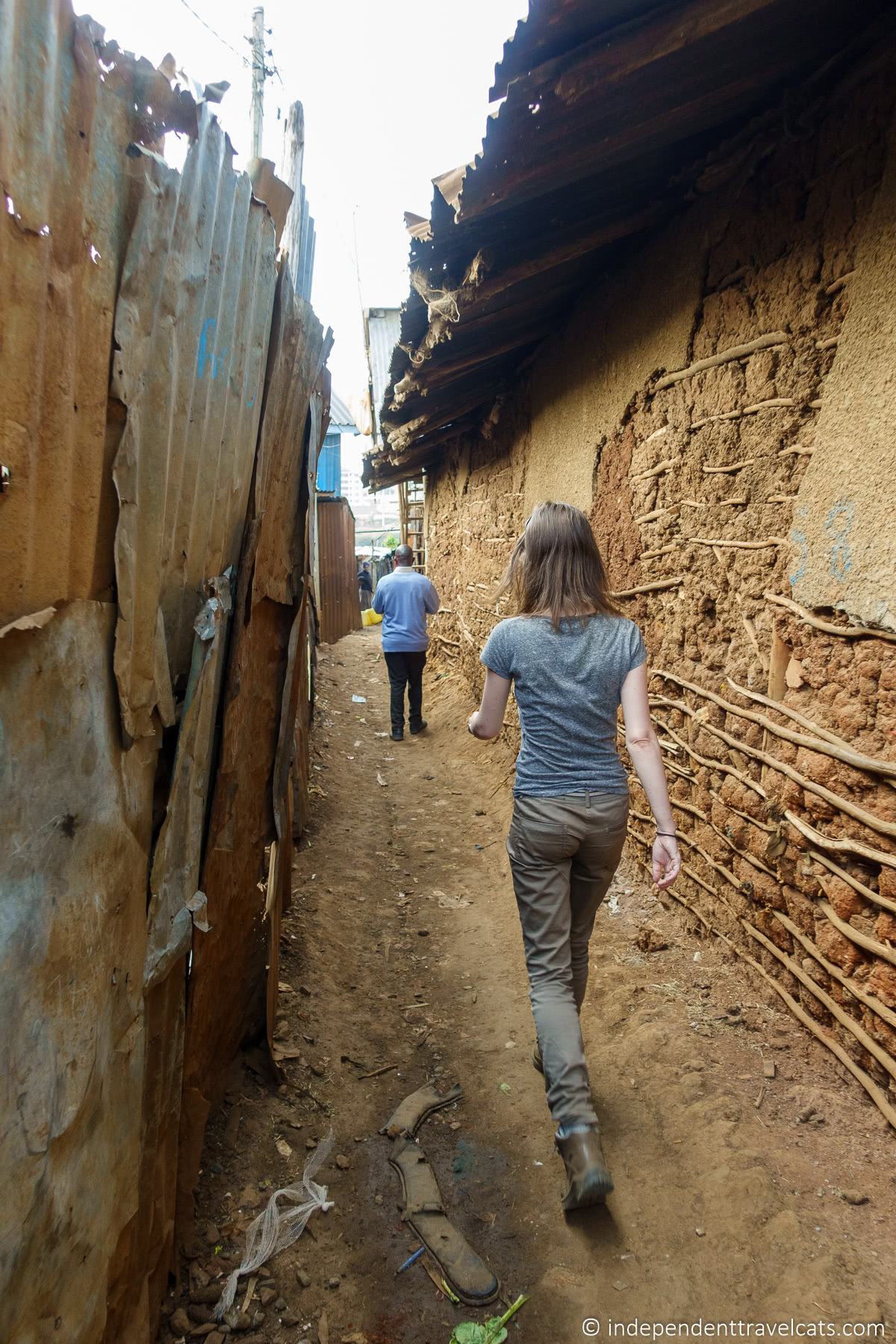
What do you think about slum tourism? Do you think it can be done in a more responsible manner? Have you taken a slum tour? If so, we’d love to hear about your experience.
Share this Post!
There are 10 comments on this post.
Please scroll to the end to leave a comment
Daniel E. Post author
February 1, 2024 at 3:07 am
Informative blog on slum tourism and lots of cited research and personal experience, exactly what i was searching for, thanks so much!
Jessica & Laurence Norah Post author
February 1, 2024 at 12:41 pm
Glad your found our information on slum tourism and slum tours helpful, just let us know if you have any questions.
Wishing you safe and happy travels! Jessica
Ravi Post author
October 11, 2022 at 5:06 am
This article enlightened me with a very detailed explanation when searching for information about slum tourism for a research report. thanks for sharing.
October 12, 2022 at 3:00 pm
Glad you found our article on slum tourism helpful for your research. If you have any questions we might be able to help with, just ask!
Best, Jessica
Irene Post author
July 28, 2022 at 9:23 pm
Some great research and tips! What a very interesting history. I would like to pay a visit to slum in Rio in 2024. I’m excited to get to know more about their people, life, and culture.
July 31, 2022 at 12:19 am
Glad you enjoyed our responsible travel tips for visiting slum areas. I hope you enjoy your time in Rio in 2024.
Seana Turner Post author
July 12, 2022 at 7:13 am
Wow, I didn’t even know this was a thing. I love the respectful tone of this post. It is so important to check your heart and motives before embarking on a trip like this. I love the granular advice about using local currency and visiting on foot. No one wants to feel like their misfortune and struggles are someone else’s entertainment. I hope this type of tourism benefits those who need the world’s help. Thanks for posting on this topic!
July 12, 2022 at 8:00 am
Thanks for taking the time to comment, and glad you enjoyed reading the post. I like your comment of checking “your heart and motives”.
I started reading and writing about slum tourism several years ago and avoided taking any slum tours. But I decided to take one earlier this year while in Nairobi (Kibera) to better understand what the tours were like and how to do it in the most responsible way possible. It felt a bit weird to write about something I had never done.
One thing we noticed in Kibera is that it just lacks the infrastructure for large numbers of residents to benefit from tourism. There were very few things a tourist could buy or do unlike in some other slum areas where there are stalls selling local crafts and souvenirs, food markets, a museum talking about local history, places where people can eat, see a performance, or sleep. So it doesn’t appear to currently create much employment or benefit other than for tour guides and those directly involved in the tour itself. We were also the only tourists we saw there during our visit.
Tourism is such a major industry in so many countries and leaving areas like this completely out of being able to benefit from tourism seems wrong. But having tourists going just to gawk and take photos of poverty seems wrong as well. Each country and each community is different and the study in Cairo indicated that different approaches need to be taken in each community.
Individual travelers can only do so much, and ultimately changes need to come from the tour operators and local governments to ensure that offerings are as responsible and ethical as possible. But reviews, complaints, and changes in demand over time by travelers can help.
Marge D Post author
July 10, 2022 at 11:25 am
Some great research and tips as always, very interesting history. I actually did a slum tour, called a favella tour as you mention in Rio. When in Brazil, it was just part of full day walking tour we did. I have to admit I didn’t consider most of these issues or potential probelms and never heard the term slum tourism. But I do remember they asked us not to take photos. Back then, around 2002 or 2003, most people didn’t have cameras on their phones so I think that part was less of an issue. This definitely gives me some food for thought!!
I wonder if rural tours of poor villages and disaster tourism is sort of the same thing?
July 10, 2022 at 1:38 pm
Thanks for taking the time to comment and share your experience of the favela tour you did in Rio. I am glad you enjoyed the article.
Yes, I think that any kind of tour to more impoverished areas, whether rural villages or urban ones, can have very similar issues. Disaster tourism is a bit different but has many of the same potential issues of being voyeruristic and potentially exploiting vulnerable people. I know there has been discussion about the ethics of tours to areas devastated by recent floods or hurricanes (including after Hurricane Katrina in New Orleans). All tourism can have negative effects. I think people just have to consider the potential harms of their travel decisions, make an informed decision, and try to minimize any harm.
Leave a Reply Cancel reply
Your email address will not be published. Required fields are marked *
Notify me of replies to my comment (just replies to your comment, no other e-mails, we promise!)
Subscribe to our monthly Newsletter where we share our latest travel news and tips
We only ask for your e-mail so we can verify you are human and if requested notify you of a reply. To do this, we store the data as outlined in our privacy policy . Your e-mail will not be published or used for any other reason other than those outlined above.

Favela Tour Rio de Janeiro
Our favela tour in rio will take you through the narrow streets of the ghetto , as well as a family home where an amazing view of the city can be seen. while there in the slum, guides will talk about historical and social aspects of the place..
The favela da Rocinha used to be largest slum in South America until 1992, when it became a district of Rio de Janeiro. It has conquered its own administrative zone, with an office and an administrator. Nowadays, this district has a population of approximately 120,000 inhabitants. Although it preserves the unorganised look of a ghetto, it has everything any other district of Rio has. During the tour, tourists will find out that the place has its own clinics, supermarkets, public schools, banks and even a tv station.
Tour Program:
WE start the tour collecting travelers from their hotels in Rio ( under the covered areas), heading towards the favela. Once there, we start a walking tour visiting the narrow streets and its markets. We visit a local home and also a terrace with an amazing view of the whole place. Along the way the guide will talk about the history of the favela, its social challenges, its culture and much more. It is an unforgetable tour, do not miss it!
Tour Capacity:
From 02 to 28 people
R$ 279,00 per person - For 02 people
R$ 249,00 per person - From 03 to 05 people
R$ 229,00 per person - From 06 to 28 people
* If you are a solo traveler booking this tour, please note that in case no other passenger joins it, we will offer a private tour a day before the trip, for extra R$ 200,00. Clients may decline the offer and request a refund.
* For groups over 28 people please contact us via E-mail or WhatsApp
What's included?
- Hotel pick up and drop off
- guiding services
- a walk through some of the alleys of Rocinha
- a visit to a local family home
- a tour around the commercial area, in order to get the feeling of the environment.
Food, drinks and a tip to the family of the house we visit.
Please note
What to bring.
Wear sunscreen for sunny days and dont forget the camera.
CONTACT INFO
+55 21 964239366, [email protected], avenida lúcio costa, barra da tijuca, br, useful links, ministry of tourism.


Favela Tours in Brazil: 5 Tips for Responsible Slum Tourism
- Polyana Oliveira
- October 26, 2017
- Cultural Travel , Responsible Travel Tips
Many of our clients who visit Brazil, and especially those who visit Rio de Janeiro, ask us about Favela Tours. These are tours that take travelers into the slums or shantytowns in the city.
They’ve traditionally been considered violent places, centers for drug trafficking, and where the very poor of large cities live. And this is oftentimes the case.
Despite all of this, tourism to favela has always been of interest to travelers, but has become more popular with the rise of accommodations inside the favela, the pacification and increased police presence of many favelas prior to the World Cup. Many are curious as to what the phenomenon of the favela is, how they came to be, and why people live in these sorts of conditions. Others want to visit because of what they’ve seen in popular culture – from movies to music videos to visits from the Pope, favelas have been televised and made popular by very influential figures.
We are not against travelers visiting favelas, and in some cases, even encourage our clients to visit some of the favelas in the city. However, certain precautions need to be taken into consideration when visiting a favela – for your own safety, and for respect to the communities you’re visiting.
Below we’ve listed some tips on visiting favelas while in Brazil. If you’re interested in booking a trip to a favela and need our help, you can always get in touch with us here, or check out our Favela Tours in Rio de Janeiro.
1. Always visit with an accredited guide from the community.
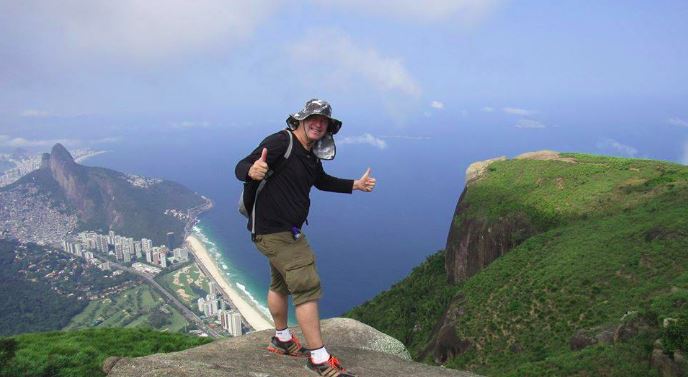
You’ll hear from anyone who lives in the favela, that where they live is a “comunidade,” or, community. For those who have been born and raised in the community, you will find are incredibly proud of their home, and they treat their neighbors like family. It’s something that’s really special to see, especially if you’re coming from an urban environment where this isn’t the case.
In Rio de Janeiro, we’ve found community guide accrediation courses for locals from the favelas. This means, that you’ll find guides who are from these communities, working to show their homes and their way of life to travelers. They’ll not only be the perfect guides to show you the community, but they’ve also been trained in safely taking visitors around the favela. This is the safest and most responsible way to visit the favela.
Many other tour guides have visited favelas many times, but when booking a trip – ask if you can go with them, and a community guide, in case you’re not booking directly with someone from the community. Even if the cost is a bit higher, your experience will be that more special.
2. Avoid visiting in a vehicle.
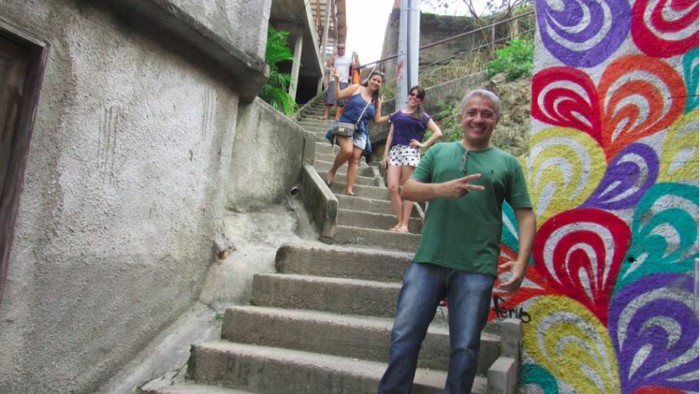
Unless you’re taking a public transport-like van to the tops of the favelas, we do not recommend visiting in private vehicles. Community members won’t recognize your vehicle, and could feel threatened. Since some favelas do have a certain levels of violent activity, this is especially important for your safety.
Plus, would you want someone riding around in a car in your neighborhood, poking their heads out to see how you live?
3. Avoid favelas with recent violent upheavals.
Many people confuse the term “pacified favelas” with “safe to roam freely.” This really just means there were territories “rescued” from the drug dealers and violent groups in favelas. This does not mean the danger is not there.
Recently, a series of conflict between the Rio police and traffickers in the Rocinha community, one of the most visited favelas, gave rise to shootouts in the favela. This led to more policing in the favela, which led to the horrendous death of a foreign tourist (shot by a police officer).
When choosing the favela you’d like to visit, make sure to see if it hasn’t been in the local news recently, or consult with your travel agent, or community guide to give you knowledge on the situations and advice on whether or not it is safe on your dates of travel.
4. Visit for the right reasons.
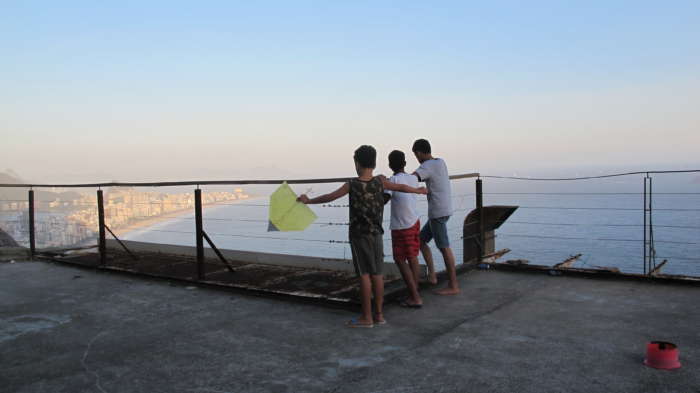
One of the other reasons to visit with a community guide is to have more opportunity to interact with the community you’re visiting. Ask your guide if you can have a meal or drink at a local bar, restaurant, or even home. You’ll be contributing to commerce in the favela and have genuine interactions. This is what makes a favela visit special and memorable.
Since everyone knows each other in the favela, they’ll know you’re a tourist, and they know you’re curious to see how they live. Showing genuine interest in the communiy, and interacting with locals, whether in a restaurant, bar or community center, accompanied by a local guide, will help you learn even more about the day to day of the favela and people’s stories.
Some tours offer workshops in communities, from arts and crafts, to gastronomy, to theater, or nature hikes. Make sure to do some research before choosing the tour that’s most meaningful to you. We’re always happy to help you on this journey!
5. Make a contribution to the community.

For the most part, those who live in favela communities are humble, hard working, and honest. Once you’re settled in the tour with your guide, you’ll almost feel at home yourself. And just as you’d bring a gift to a friend’s home when you visit, we encourage contributing to these communities you visit in Brazil as well. You can ask your guide beforehand if there’s a community organization he or she feels needs financial contributions, or if you can bring some gift in kind to your host, guide or family in the favela. You can also contribute through organizations like Pack for a Purpose , or ask us how to help!
If you need any help planning your trip to Rio de Janeiro, please don’t hesitate to get in touch with us . And as always safe travels 🙂
Related Posts
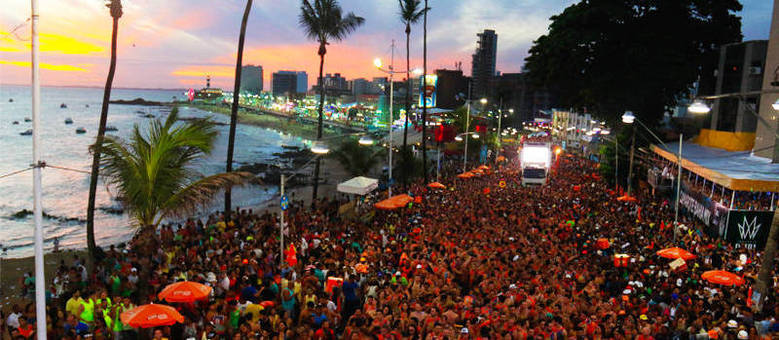
3 Destinations to Spend Carnival in Brazil, Which Are Not Rio de Janeiro

Viare Partners with Sumak Travel
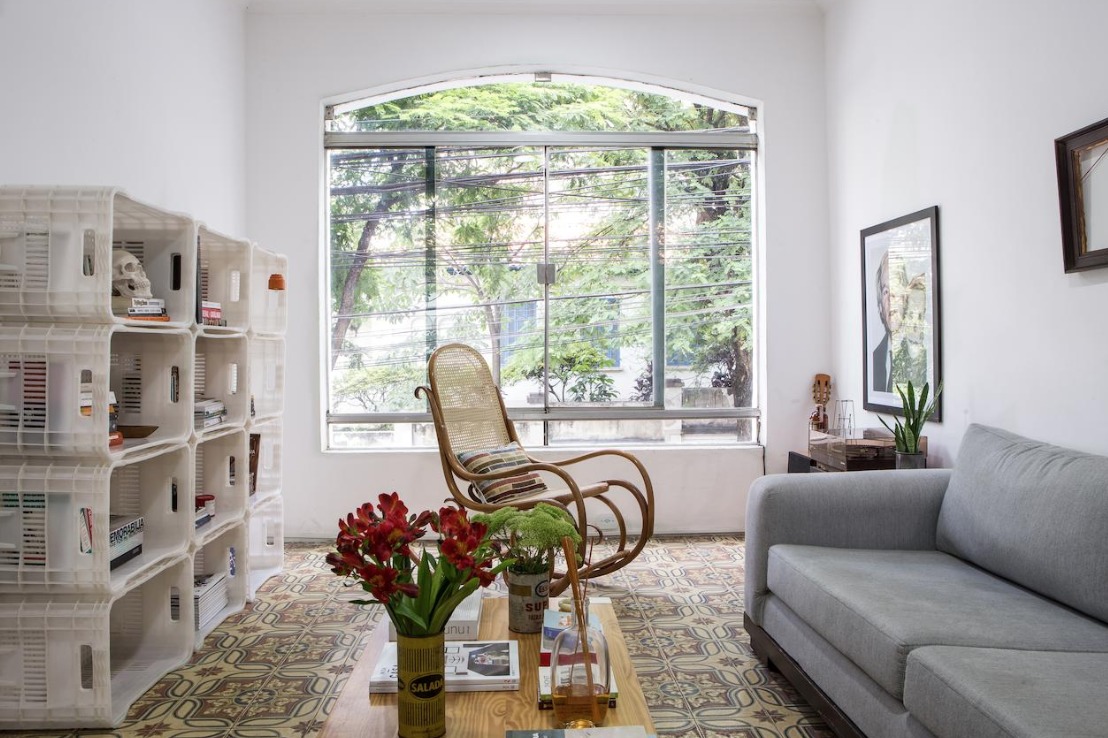
7 Charming (and Affordable!) Small Hotels in Big Brazilian Cities
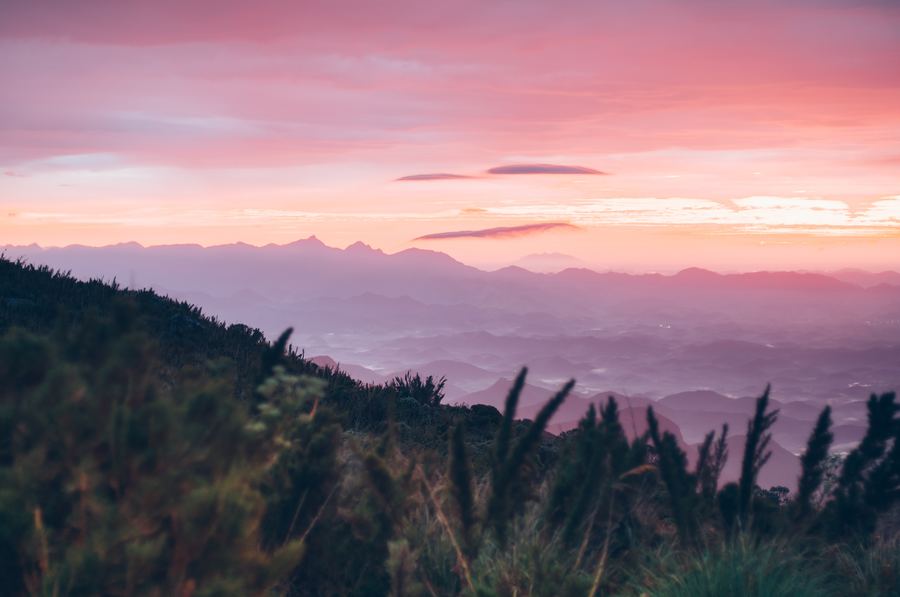
What to do in Teresópolis, the Mountaintop Getaway in Rio de Janeiro
Helpful links.
- Tailor Made
- Inspiration
- Destination
viaretravel


Slum tourism: What is it and how does it work?
Disclaimer: Some posts on Tourism Teacher may contain affiliate links. If you appreciate this content, you can show your support by making a purchase through these links or by buying me a coffee . Thank you for your support!
Slum tourism is, believe it or not, a real type of tourism . Yep, you got that right- people go to slums whilst on holiday. But, why? In this article I will introduce you to the concept of slum tourism and tell you what it’s all about. Interested to learn more? Read on…
What is slum tourism?
Slum tourism definitions, what is white saviour syndrome, what does a slum tour involve, positive impacts of slum tourism, negative impacts of slum tourism, the ethics of slum tourism, slum tourism in south africa, slum tourism in brazil, slum tourism in india, slum tourism in indonesia, slum tourism in africa, slum tourism: conclusion, further reading.

Slum tourism is essentially when people visit slums – or, more widely, poverty stricken areas – as a form of tourism. This will generally be in a foreign country, one they are visiting as a tourist on holiday or on a business trip. It has also been referred to as ghetto tourism and poverty tourism.
In ‘ Theorizing Slum Tourism ’, researchers Eveline Dürr and Rivke Jaffe described slum tourism as follows:
‘ Slum tourism involves transforming poverty, squalor and violence into a tourism product. Drawing on both altruism and voyeurism, this form of tourism is a complex phenomenon that raises various questions concerning power, inequality and subjectivity. ‘
While this describes slum tourism, it doesn’t necessarily define what it actually is. Bob Ma of the University of Pennsylvania says this:
‘ Slum tourism is one of the fastest-growing niche tourism segments in the world, but it is also one of the most controversial. The United Nations defines a slum as, “a run-down area of a city characterized by substandard housing and squalor and lacking in tenure security” (UN, 2007). Slum tourism is the organization of tours in these areas. As a niche segment, slum tourism is distinguished from developmental tourism, which is a broader term that includes tourism in any region that is undergoing development. ‘
Slum tourism as charity tourism
Some people engage in charity tourism – visiting slums or areas of high poverty with the intention of ‘making things better’. This is also sometimes called volunteer tourism . You can see this on Children In Need in the UK, for example, where we see videos of people heading to various underdeveloped areas of Africa to build schools or install wells for fresh water access etc. You can pay (a lot of) money to do this yourself through various organisations.

People do this as it is within human nature to want to help people who have less than we do. But it is also, of course, a chance to see somewhere new and explore a different culture . It can also be a great way to boost your CV. This means that taking part in slum tourism isn’t a purely selfless act, and this is why it can sometimes be frowned upon.
Studies show that slum tourism can have negative impacts on local communities – the use of unskilled labour, for example, and the taking of jobs that could ultimately have gone to local people. There is also usually no long term commitment involved, and of course there is the concept of white saviour syndrome.
The following extract comes from De-constructing the ‘White Saviour Syndrome’: A Manifestation of Neo-Imperialism by Felix Willuweit:
‘With the recent widespread of protests for black civil rights and against racism across the Western world, the topic of white prejudice has risen to the centre of public attention, of which one manifestation is the so-called ‘White Saviour Syndrome’. Whether it is Ed Sheeran posing for ‘Comic Relief’ with a number of black children (Hinsliff, 2019), Madonna adopting children from Malawi (Hinsliff, 2019), or students going on adventures advertised for ‘young philanthropists’ within a multi-million dollar gap-year industry (Bandyopadhyay, 2019), numerous cases of altruistic acts of ‘White Saviours’ can be found throughout popular culture in the global North.’
Whereas these practices follow an altruistic narrative, they are commonly criticised as serving to satisfy a ‘White Saviour Syndrome’, the phenomenon in which a white person “guides people of colour from the margins to the mainstream with his or her own initiative and benevolence” which tends to render the people of colour “incapable of helping themselves” and disposes them of historical agency (Cammarota, 2011: 243-244).
So what does slum tourism involve? Many tour operators offer literal ‘slum tours’ as part of their packages, and of course you can visit slum areas alone as they are just parts of various areas. AfricanTrails.co.uk, for example, have a page discussing slum tours and they state that some of their packages do offer slum visits in Kenya, Uganda, Namibia and more.

Reality Tours and Travel are another company offering slum tours. As the company name suggests, they hope to offer a ‘realistic’ side to the places tourists visit. Based in India , a country with a lot of poverty, their slogan is ‘USING TOURISM TO CHANGE LIVES’. They say: Our ethical and educational Dharavi slum tours give visitors a unique glimpse into everyday life for many Mumbaikars while breaking down the negative stereotypes associated with slums. 80% of the profits from every tour are invested back into the community through the programs of our NGO, Reality Gives , and most of our guides are from the community.
Slum tourism has some positives to it. It gives people an insight into how poverty can affect people – humans are curious by nature, and if you are not living in poverty yourself, or never have, then it can be hard to imagine what it is really like. Visiting a slum whilst on holiday is like opening a window to another life, however briefly.
It is also a chance to provide an income to people living in slums, if the tour involves some sort of opportunity to purchase goods or donate money. And with some tours, as you can see from Reality Tours and Travel above, the booking cost goes into improving the community.
Of course, there are negatives impacts associated with slum tourism too. The main one is that it treats those who live in slums as though they are in a zoo, dehumanising them so tourists can see what it’s like before swanning off back to their hotel and other luxuries. Some would go so far as to argue that they are a form of ‘ human zoo ‘. These tours portray poverty as something exotic, rather than a very real danger to the lives of the people impacted by it. It is also questionable how far the money trickles down. With people paying for organised tours, how sure can we be that real people are accessing the money?

Looking at the pros and cons it is clear that there is an ethical question surrounding slum tourism . People who live in poverty and live in slums are real people. We need to ask ourselves whether it is fair for them to be paraded around in front of us as part of an organised tour that we are paying a company to go on.
Some questions we should ask ourselves when looking to engage in slum tourism, courtesy of slumtourism.net, are:
- To what extent does slum tourism provide an income and positive visibility for people in deprived areas?
- Which stakeholders are involved in slum tourism and who profits most?
- How are guided tours organised or composed?
- What are the geographical scopes of slum-tourism and which place does it occupy in the new mobility system?
- Where does slum tourism fit in a globalised world of tourist consumption?
It is similar to visiting remote tribes, in a way, just as I explain in my article about the long neck tribe in Thailand . Tourists coming in from outside to view life in a slum through a western lens for a few minutes… does this paint a fair picture of slums?
Slum tourism destinations
There are various places around the world where slum tourism is prevalent. Here are some examples-
Slum tourism exists across South Africa . Here it is also known as township tourism – in SA, townships are the underdeveloped urban areas, generally populated by people of colour as a fall out from the Apartheid era. Apparently, around 25% of visitors to Cape Town engage in township tours. This city alone has around 40-50 township tour operators.
Slum tourism in Brazil equates to ‘favela tours’. Favelas are slums or shanty towns built on the outskirts of major cities across Brazil, and many people visit them for tourist purposes while on holiday in this beautiful country. Favelas are known to be dangerous areas. They are rife with crime, violence and drug dealing, but thousands of tourists every month visit these areas with curiosity.
As mentioned above when I spoke about Reality Tours and Travel, India is a prime spot for slum tourism due to the high levels of poverty here. The film Slumdog Millionaire put Indian slums onto the screens of millions of people, many of whom became keen to see it for themselves on a trip to India. There are around 15,000 people visiting the Dharavi slum each year alone.
Jakarta is home to a slum where families of 5 squeeze into ‘houses’ no bigger than the average western bathroom. They survive on pennies, and welcome tourists into their homes to see what it is like. Jakarta Hidden Tours is run by Ronnie. He’s a charity worker who donates half of his profits to the local community in an attempt to improve their lives.
Across Africa there are poor and underdeveloped communities. Slums tend to exist in Kenya and Uganda, for the most part. AfricanTrails say:
Going on an Africa slum tour is a great way to see what life is like for the majority of residents in a specific African town or city. Visitors can see how people live and the work they carry out in order to provide for their families. Slum tours are not purely filled with misery, the towns often have vibrant communities with shops, schools and market stalls.
I t is easy to forget that there are people living in these conditions, as it is not something you see every day, so for many, Africa slum tours are a real eye-opening experience. Visitors leave the area with the intention of donating to charities, helping those living in these places. Slum tours give the chance for tourists to interact with others from different backgrounds and see the true beauty of Africa and its people.
To conclude, slum tourism occurs around the world, and has done since Victorian times in England. Back then, the aristocracy would visit the capital’s poorest areas for voyeuristic and/or philanthropic purposes. And still it continues. People are, of course, eager to see another way of life. Often they believe that they are helping, and visiting people at their lowest can be a great way to remind you that really, you don’t have it all that bad. The ethics are questionable, but there are definitely ways you can visit a slum without it being a negative thing.
Top 10 dark tourism destinations (including WUHAN!)
Dark tourism explained: What, why and where
What is suicide tourism?
Medical tourism: What where and why
Liked this article? Click to share!
A Look Into Brazil’s Makeover of Rio’s Slums
The Brazilian government’s bold efforts to clean up the city’s notoriously dangerous favelas is giving hope to people who live there
/https://tf-cmsv2-smithsonianmag-media.s3.amazonaws.com/accounts/headshot/Screen_Shot_2021-09-15_at_12.44.05_PM.png)
Joshua Hammer
Contributing writer
/https://tf-cmsv2-smithsonianmag-media.s3.amazonaws.com/filer/Rio-Marcos-Rodrigo-Neves-631.jpg)
Marcos Rodrigo Neves remembers the bad old days in Rocinha, the largest favela , or slum, in Rio de Janeiro. A baby-faced 27-year-old with a linebacker’s build and close-cropped black hair, Rodrigo grew up dirt poor and fatherless in a tenement in Valão, one of the favela’s most dangerous neighborhoods. Drug-trafficking gangs controlled the turf, and police rarely entered out of fear they could be ambushed in the alleys. “Many classmates and friends died of overdoses or in drug violence,” he told me, sitting in the front cubicle of the Instituto Wark Roc-inha, the tiny art gallery and teaching workshop he runs, tucked on a grimy alley in the heart of the favela. Rodrigo’s pen-and-ink portraits of Brazilian celebrities, including former President Luiz Inácio Lula da Silva—whom Rodrigo met during the president’s visit to the slum in 2010— and the singer-songwriter Gilberto Gil, adorn the walls. Rodrigo might have become a casualty of the drug culture himself, he said, if he hadn’t discovered a talent for drawing.
At 16, Rodrigo began spraying the walls of Rocinha and adjacent neighborhoods with his signature image: a round-faced, melancholy clown with mismatched red and blue eyes. “It was a symbol of the community,” he told me. “I was saying that the political system turned us all into clowns.” He signed the graffiti “Wark,” a nonsense name he made up on the spot. Soon the image gained Rodrigo a following. By the time he was in his late teens, he was teaching graffiti art to dozens of kids from the neighborhood. He also began to attract buyers for his work from outside the favela. “They wouldn’t come into Rocinha,” he said, “so I would go down to the nicer areas, and I would sell my work there. And that’s what made me strong enough to feel that I had some ability.”
In November 2011, Rodrigo hunkered down in his apartment while the police and military carried out the most sweeping security operation in Rio de Janeiro’s history. Nearly 3,000 soldiers and police invaded the favela, disarmed the drug gangs, arrested major traffickers and set up permanent positions on the streets. It was all part of the government’s “pacification project,” an ambitious scheme meant to bring down levels of violent crime and improve Rio de Janeiro’s image ahead of the 2014 World Cup and the 2016 Summer Olympics.
Rodrigo had deep worries about the occupation, given the Brazilian police’s reputation for violence and corruption. But eight months later, he says that it’s turned out better than he expected. The cleaning up of the favela has removed the aura of fear that kept outsiders away, and the positive publicity about Rocinha has benefited Rodrigo’s artistic career. He landed a prized commission to display four panels of graffiti art at the Rio+20 United Nations Conference on Sustainable Development last June, and another to decorate downtown Rio’s port district, which is undergoing massive redevelopment. Now he dreams of becoming an international star like Os Gêmeos, twin brothers from São Paulo who exhibit and sell their work in galleries from Tokyo to New York. In a community starved for role models, “Wark” has become a positive alternative to the jewelry-swathed drug kingpin—the standard personification of success in the slums. Rodrigo and his wife have a newborn daughter, and he expresses relief that his child won’t grow up in the frightening environment that he experienced as a boy. “It’s good that people are no longer smoking dope in the streets, or openly carrying their weapons,” he told me.
Brazil is a flourishing democracy and regional superpower, with a robust annual growth rate and the world’s eighth-largest economy. Yet its favelas have remained stark symbols of lawlessness, gross income disparities between rich and poor, and Brazil’s still-deep racial divide. In the 2010 census, 51 percent of Brazilians defined themselves as black or brown, and, according to one government-linked think tank, blacks earn less than half as much as white Brazilians. Nowhere are the inequalities starker than in Rio’s favelas, where the population is nearly 60 percent black. The comparable figure in the city’s richer districts is just 7 percent.
For decades, drug gangs such as Comando Vermelho (Red Command)—established in a Brazilian prison in 1979—and Amigos dos Amigos (Friends of Friends), an offshoot, operated a lucrative cocaine-distribution network within the sanctuary of the favelas. They bought off police commanders and politicians and guarded their turf with heavily armed security teams. To cement the loyalty of the favelas’ residents, they sponsored neighborhood associations and soccer clubs, and recruited favela youths by holding bailes funk , or funk parties, on Sunday afternoons. These raucous affairs were often replete with underage prostitutes and featured music called funk carioca, which celebrated drug-gang culture and gang members who had died fighting the police. Bloody internecine wars for control of the drug trade could leave dozens dead. “They would block off the entrances of the alleys, making it extremely dangerous for the police to penetrate the favelas,” I was told by Edson Santos, a police major who conducted several operations in the favelas during the past decade. “They had their own laws. If a husband hit his wife, the drug traffickers would beat him or kill him.”
In 2002, a 51-year-old Brazilian journalist, Tim Lopes, was kidnapped by nine members of a drug gang near one of the most dangerous favelas, Complexo do Alemão, while secretly filming them selling cocaine and displaying their weapons. The kidnappers tied him to a tree, cut off his limbs with a samurai sword, then burned him alive. Lopes’ horrific death became a symbol of the depravity of the drug gangs, and the inability of security forces to break their hold.
Then, in late 2008, the administration of President da Silva decided that it had had enough. State and federal governments used elite military police units to conduct lightning assaults on the drug traffickers’ territory. Once the territory was secured, police pacification units took up permanent positions inside the favelas. The Cidade de Deus (City of God), which had become infamous thanks to an award-winning 2002 crime movie of the same name, was one of the first favelas to be invaded by security forces. A year later, 2,600 soldiers and police invaded Complexo do Alemão, killing at least two dozen gunmen during days of fierce fighting.
Then it was Rocinha’s turn. On the surface, Rocinha was hardly the worst of the favelas: its proximity to wealthy beachfront neighborhoods gave it a certain cachet, and it was the recipient of hefty federal and state grants for urban redevelopment projects. In reality, it was ruled by drug gangs. For years, Comando Vermelho and Amigos dos Amigos battled for control of the territory: Comando controlled the upper reaches of the favela, while Amigos held the lower half. The rivalry culminated in April 2004, when several days of street fighting between the two drug gangs left at least 15 favela dwellers, including gunmen, dead. The war ended only after police entered the favela and shot dead Luciano Barbosa da Silva, 26, known as Lulu, the Comando Vermelho boss. Four hundred mourners attended his funeral.
Power passed to Amigos dos Amigos, led in Rocinha by Erismar Rodrigues Moreira, or “Bem-Te-Vi.” A flamboyant kingpin named for a colorful Brazilian bird, he carried gold-plated pistols and assault rifles and threw parties attended by Brazil’s top soccer and entertainment stars. Bem-Te-Vi was shot dead by police in October 2005. He was succeeded by Antonio Bonfim Lopes, otherwise known as Nem, a 29-year-old who favored Armani suits and earned $2 million a week from cocaine sales. “He employed 50 old ladies to help manufacture and package the cocaine,” I was told by Major Santos.
But Jorge Luiz de Oliveira, a boxing coach and battle-scarred former member of Amigos dos Amigos, who served as one of the drug kingpin’s top security men, said that Nem was misunderstood. “Nem was an exceptional person,” Luiz insisted. “If somebody needed an education, a job, he would get it for them. He helped everybody.” Luiz assured me that Nem never touched drugs himself or resorted to violence. “He was an administrator. There are bigger criminals running around—like ministers, big businessmen—and they are not arrested.”
Unlike with the City of God and Complexo do Alemão, the occupation of Rocinha proceeded largely without incident. Authorities positioned themselves around entrances to the favela days in advance and ordered gunmen to surrender or face fierce reprisals. A campaign of arrests in the days leading to the invasion helped to discourage resistance. Around midnight on November 10, 2011, federal police, acting on a tip, stopped a Toyota on the outskirts of the favela. The driver identified himself as the honorary consul from Congo and claimed diplomatic immunity. Ignoring him, police opened the trunk—and found Nem inside. Three days later, police and soldiers occupied Rocinha without firing a shot. Today Nem sits in a Rio prison, awaiting trial.
It is only a 15-minute taxi ride from the wealthy Leblon neighborhood by the ocean to Rocinha, but the distance spans a cultural and economic gap as wide as that between, say, Beverly Hills and South Central Los Angeles. On my first visit to the favela, my interpreter and I entered a tunnel that cut beneath the mountains, then turned off the highway and began to wind up the Gávea Road, the main thoroughfare through Rocinha. Before me lay a tableau at once majestic and forbidding. Thousands of brick and concrete hovels, squeezed between the jungle-covered peaks of Dois Irmãos and Pedra de Gávea, were stacked like Lego bricks up the hills. Motorcycle taxis, the main form of transport in Rocinha, clogged the main street. (The mototaxi business was, until November 2011, tightly controlled by Amigos dos Amigos, which received a sizable percentage of every driver’s income.)
From nearly every utility pole hung a bird’s nest of wires known as gatos—or cats—illegally strung by locals to provide people with cheap electricity and phone service. It is estimated that about 20 percent of Rocinha’s population benefits from the gatos, though the number has dropped since pacification. Signs of the new era were ubiquitous: Black-uniformed military police officers and blue-uniformed forestry police, all armed with automatic weapons, stood guard at the entrance to nearly every alley. The community had strung a banner over the Gávea Road: “Welcome to Rocinha. The danger now is that you may never want to leave.”
Rocinha (the name means “Little Farm”) began taking shape about 90 years ago. Poor black migrants from the northeastern state of Ceará, one of Brazil’s least-developed and most drought-stricken regions, began to occupy a sugar-cane and coffee plantation on the outskirts of Rio. The migration picked up during the worldwide depression of the 1930s and never slowed. “In 1967, it was all wooden shanties, half as big as today,” I was told by José Martins de Oliveira, a community activist who migrated from Ceará that year. Bit by bit, a permanent community took shape: In the early 1970s, following a three-year struggle, the state government began to pipe municipal water into the favela. “We formed an association, and we learned that we could fight for our rights,” said Martins, now a 65-year-old with shoulder-length white hair and an Old Testament gray beard. Rocinha expanded up the hillsides: Structures of brick and concrete replaced flimsy wooden shanties; utility companies introduced electricity, phone lines and other basic services. Today, Rocinha has a population of between 120,000 and 175,000—an official census has never been taken—making it by far the largest of Rio de Janeiro’s roughly 1,000 favelas.
According to the Organization of Civil Society in Rocinha, a social welfare group, only 5 percent of the favela’s population earns more than $400 a month, and more than half its adults are unemployed. Eighty-one percent of working residents have low-paying jobs in service industries, such as hair salons and Internet cafés. The illiteracy rate for those over age 60 is nearly 25 percent. The level of education, while improving, is still low: One-quarter of youths between the ages of 15 and 17 are not in school.
One morning in the favela, Rodrigo took me on a tour of Valão, where he had spent most of his childhood. We walked down alleys lined with cheap cafés, bars and hair salons, and turned into Canal Street, which had a deep channel running down the center of the road. Gray, stinking water cascaded from the top of the favela, carrying the waste of countless families toward its Atlantic Ocean dumping ground. We climbed a stone staircase that wound through a warren of houses, packed so tightly together that they cut off almost all natural light. “This is the worst neighborhood of the city,” he said. He gestured to an unpainted hovel sandwiched between other buildings on a lightless alley. I could hear the sound of gushing water from the nearby sewer. The stench of raw sewage and fried food was overpowering. “This is my mother’s house,” he said.
Rodrigo’s mother, who cleaned houses for the affluent in Ipanema and Leblon, threw his father out when Rodrigo was a baby because of his chronic philandering. “He had a lot of women,” he told me. “He asked her to take him back, but she said no, even though she was totally in love with him before.” He has met his father only twice since then. His mother initially looked down on Rodrigo’s graffiti as “dirtying the walls.” When he was 18, she secured him a highly sought-after slot in the air force. “Friends would go to the air force, the army, and learn how to use guns, and come back to join the drug gangs,” he told me. “I explained that to my mother, but she didn’t understand. She got angry at me.” He lasted a week in boot camp. “I didn’t want to salute. I am not the obedient type,” he explained. When he quit, his mother was heartbroken, but she came to accept her son’s choice. Now, said Rodrigo, “she sees me as an artist.”
Even so, Rodrigo’s relationship with his mother is strained. When he married four years ago at 22 and announced that he was moving out of the house, she reacted badly to his declaration of independence. “I was the only son,” Rodrigo told me, “and she wanted us to live with her, in the building that she owns, and take care of it.” But there was more to the rupture than Rodrigo’s lack of interest in maintaining the house. Although social attitudes have changed in Brazilian society, gender hierarchies remain rigidly in place in Rocinha. “You still need a man to be respected. It’s hard for a woman to be alone,” Rodrigo explained. “She felt that I abandoned her.” He admitted that he hadn’t spoken to his mother since his marriage. When my interpreter and I offered to go inside the house and broker a reconciliation, he shook his head. “It’s too late,” he said.
Moments later, we passed three shirtless men loitering in the alley; each was covered with lurid tattoos. The men eyed us warily, then dispersed. Rodrigo explained that they were drug traffickers waiting to conduct a transaction when we showed up. “They didn’t know who you were,” he said. “You might have been tied to the police.” Although the police control the main intersections of Rocinha, and have largely disarmed the drug gangs, the sale of cocaine, methamphetamines, hashish and other drugs in the back alleys of the favela remains brisk.
From the top of the favela, where the houses gradually thinned and gave way to a strip of forest, I could see the entire panorama of Rio de Janeiro: the beach community of Ipanema, Sugar Loaf Mountain, the Christ the Redeemer statue with outstretched arms atop the 2,300-foot-high granite peak Corcovado. Villas of the rich, tantalizing and out of reach, dotted the beachfront just below us. When he was a boy, Rodrigo told me, he would visit a natural spring in this forest, splashing in the cool water and finding a refuge from the dust, heat and crime. Then gunmen from Comando Vermelho laid claim to the forest and it became their getaway spot. “I couldn’t come anymore,” Rodrigo said.
Now that the armed criminals are mostly gone, what is next for Rocinha? Many residents said they expected a “peace dividend”—a flood of development projects and new jobs—but nothing has materialized. “For the first 20 days after the occupation, they introduced all kinds of services,” José Martins de Oliveira told me, as we sat in the tiny living room of his home. “Trash companies came in, the phone company, the power company. People were taking care of Rocinha; then, after three weeks, they were gone.”
In recent years, the government has made attempts to improve the quality of life in the favela. The Growth Acceleration Program (PAC), a $107 million urban renewal project launched in late 2007, has funded a variety of public works. These include a 144-apartment project painted in bright pastels and bordered by parks and playgrounds; a sports complex and public footbridge designed by the late Brazilian architect Oscar Niemeyer; and a cultural center and library. But work has slowed or stopped on other projects, including an ecological park at the top of the favela, a market and a day care center. Some residents believe that the rush of construction was intended primarily to solidify Rocinha’s support for the 2010 re-election bid of Sergio Cabral, governor of the state of Rio de Janeiro, who won handily. In November 2011 the state government pledged another $29 million in PAC money for development of the favela, but activists say they haven’t begun to deliver it. “The climate here is disillusionment,” said Martins.
Instead, the government seems more interested in backing projects aimed at tourists. (Before pacification, some tourists visited the slum in organized “favela tours,” a business grudgingly tolerated by the drug gangs.) A French company recently completed construction of a steel track that winds around the top of the favela, the first stage in a cable-car project that will provide visitors with panoramic views of the sprawling slum and the Atlantic beyond. Critics estimate that it could cost the state more than $300 million. The project has divided the community, pitting a handful of businessmen against the majority of residents who see it as a white elephant. The money, they say, should be spent on more vital projects such as an improved sewer system and better hospitals. Rodrigo says disparagingly that the project will allow tourists “to see Rocinha from above without putting their feet on the ground.”
The true measure of pacification’s success, Martins said, will be what transpires over the next year or two. He fears that if the status quo continues, Rocinha’s residents might even start longing for the days of the narcos: For all their brutality and swagger, the drug dealers provided jobs and pumped money into the local economy. Rodrigo was glad to see the last of the armed gangs, but he, too, has been disappointed. “The police came, they didn’t bring help, education, culture, what the people need,” he told me. “It’s the same thing as before—a group of different gunmen is taking care of this place.” Rodrigo said that the main consequence of pacification has been soaring real-estate prices, a source of deepening anxiety for him. His landlord recently announced plans to double the $350 rent on his studio, which he can’t afford. “I don’t know where I’d go if I get evicted,” he said.
A few days after meeting Rodrigo, I again took a taxi toward the top of Gávea Road, and turned off at the unfinished ecological park. I followed a dirt path through the woods to a cluster of trailers—the command center for the pacification police. Here I met Edson Santos, a rangy, forthright officer who directed the November 2011 operation. Santos took me inside a trailer, where three of his colleagues were monitoring deployment of the police on computers and communicating with them over the radio. At the moment, Santos said, 700 police were stationed in the favela and another 120 would soon arrive. That still wasn’t enough to permanently occupy the alleys where the drug trafficking takes place, but the police had kept a lid on Amigos dos Amigos. “We’ve confiscated hundreds of weapons, and a lot of drugs,” Santos told me, pointing out photographs on the walls of coca paste and rifles seized in recent busts.
Santos led me down a hill. Our destination was the former home of Nem, now occupied by police. Strategically backed against the cliffs near the top of the favela, Nem’s three-story house was far smaller than I’d expected. There were some signs of affluence—mosaic tile floors, a dipping pool and barbecue pit, a rooftop veranda that, before the raid, had been encased in glass—but otherwise it hardly reflected the tens of millions of dollars that Nem was reportedly worth. Nem’s neighbors had been so taken with stories of his wealth that they tore open walls and ceilings immediately after his arrest, “searching for hidden cash,” Santos told me. He didn’t know if they had found anything.
Nem had owned two other houses in Rocinha, said Santos, but he never ventured beyond the borders of the favela. “If he tried, he would have been arrested and lost all his money,” Santos said. In the months before his capture, the drug kingpin had reportedly become frustrated by the restrictions of his life. Santos told me that he had talked to a man who had been a friend of Nem’s since childhood. “He was coming back from São Conrado [a beach favored by Rocinha’s residents] one day when he ran into Nem,” Santos said, “and Nem told him, ‘All I want is to be able to go to the beach.’”
So far, 28 favelas in Rio have been pacified; the government has targeted another three dozen. The project has not gone entirely smoothly. In July 2012, shortly after I met Santos, drug traffickers shot dead a police officer in her barracks in Alemão—the first killing of a law-enforcement officer in the favelas since the beginning of pacification. Some favela residents wonder whether pacification will continue once the World Cup and the Olympics have come and gone. The police and army have conducted periodic invasions in the past, only to pull out and allow the drug dealers to return. And Brazil’s governments are notorious for lavishing attention—and cash—on poor communities when it’s politically advantageous, then abandoning them. But there are hopeful indications that this time it will be different: A few months ago, Congress passed a law requiring the pacifying police units to remain in the favelas for 25 years. “We are here to stay this time,” Santos assured me. The drug gangs are betting against it. As I walked back down to the Gávea Road to hail a taxi, I noticed graffiti splashed on a wall signed by Amigos dos Amigos. “Don’t worry,” it read, “we’ll be back.”
Get the latest Travel & Culture stories in your inbox.
/https://tf-cmsv2-smithsonianmag-media.s3.amazonaws.com/accounts/headshot/Screen_Shot_2021-09-15_at_12.44.05_PM.png)
Joshua Hammer | READ MORE
Joshua Hammer is a contributing writer to Smithsonian magazine and the author of several books, including The Bad-Ass Librarians of Timbuktu: And Their Race to Save the World's Most Precious Manuscripts and The Falcon Thief: A True Tale of Adventure, Treachery, and the Hunt for the Perfect Bird .

Slum Tourism: is it ethical?
This interview was originally published on Travindy on 1 April 2018
(New pictures were included in this version)
Slum Tourism: is it ethical? It is difficult to find someone that can answer this question from both a professional and an academic background. However, Tamara Ramos finds the perfect fit: Elisa Spampinato. She has studied Anthropology & Sociology in Italy (Rome) and Production Engineering in Brazil (Rio de Janeiro) and has an extensive portfolio of research on different subjects, from local governance and participatory democracy to local community development, social innovation and community-based tourism.
Tamara: Elisa, what made you interested in Favela Tours?
Elisa: I discovered Favela Tours and Slum tourism while I was living in Rio de Janeiro. Straight away I realised that is a very complex reality in itself, full of contradictions and not easy to approach analytically, nor to understand.

Observing the phenomenon closer, though, I realised that it presents a lot of interesting aspects that attracted my intellectual curiosity. For example, anthropological questions regarding the encounter with the “other” and cultural authenticity – both typical of the tourism experience – become even more intriguing and, at the same time, challenging, in the case of Slum tourism..
In addition, in a country like Brazil, we have to look at the many risks and challenges that Slum tourism faces: questions around social inequalities and power relations.
My interest in Slum tourism became even stronger when I discovered that Favela tours can also be a way of supporting a community project, and have the potential to support sustainable local development and in some cases even be a laboratory of social innovation.
So now that I was curious, I decided to study the phenomenon and concentrate on some case studies.
Tamara: What did your research focused on?
Elisa: My research did not deal with the simple moral question: is Slum tourism good or bad. People go on these tours for lots of reasons – some for the thrill of seeing poor people (the zoologic interest). Others for academic interest, or because they are involved with social and political movements, are international volunteers, or simple curious travellers.

Confronted with a variety of realities, I decided not to focus my research on the reasons that motivate tourists, but rather on the different ways in which Slum Tourism is offered in the city of Rio de Janeiro. My research aimed to analyse the degree of community involvement in the design, organization and delivery of the tourism services offered in that particular location.
During my research, I discovered the extent of the diversity of services offered: not only tours, but also accommodation, transport, sporting, environmental and cultural events, entertainment and other social activities. For this reason, I would suggest using the term Slum tourism , rather than the more restrictive Slum tours.
Tamara: How popular is such tourism in Brazil? What is the current situation of this type of tourism in the country?
Elisa: According to recent statistics, 80% of the world Slum tourism is concentrated in South Africa and Brazil, and almost all Brazilian Slum Tourism is foundin the city of Rio de Janeiro, along with a very small percentage in Paraisópolis, in the city of São Paulo.
In spite of the huge number of tourists that every year visit a Brazilian slum (around 50,000 tourists, according to data of 2012), it’s not easy to establish how many Favela tours exist in Brazil nowadays, mainly because there are many tours owned and run by private companies and tour operators which are not in any way regulated or monitored by the local authority, and even the local ABAV-RJ (Brazilian Association of Tourism Agencies of the city of Rio de Janeiro) does not have information of the activities sold by their own agencies.
There are also several cases of slum tours organised by the local communities themselves, but this is a far smaller number than those run bythe private sector. So, it is really hard to get a clear picture of the numbers of Slum tours.
I think it is important to mention that during the Olympics the face of Slum Tourism in Rio de Janeiro changed drastically, and reached its peak in terms of community involvement and political support. After the Olympics, other changes took place and they reshaped the reality of the Slum Tourism in the city again. Unfortunately, many of the local Slum tourism initiatives – , the tours, accommodations and some of the social projects – came to an end as a consequence of the new social and political circumstances. However,most of the institutions and the groups that were created and empowered along the way, as well as local communities and sustainable tourism experiences, still exist and continue their tourist activities, but in a much less supported way.
Tamara: Can Favela Tours be compared with Slum Tours in India, South Africa and other countries? What are the differences?
Elisa: The most visited and worldwide famous Slum Tours are the ones in South Africa, in Dharavi, India, and in Rio, which are all among the first to be launched in the late 80s and early 90s.
Nowadays, Slum Tours are also offered in other countries in Africa, in other cities in India, and also in Mexico, Jamaica, Indonesia, Thailand and in the Philippines, where they started in 2011.
I think we do not need to highlight the obvious cultural differences and typical features for each of the countries where slum tours are offered, but we should consider the history and the social, political and cultural backgrounds which make each favela/slum unique and special, even in the same country and in the same city, like in the case of Rio de Janeiro.
Without going into too muchsociological and anthropological analysis for each of the favelas, we should remember that each slum is a society and a rich and complex reality in constant change. Easy comparisons and judgment across experiences can be not only shallow and meaningless, but also very disrespectful of those cultures and their history.

In Rio, for example, one could take part of a Slum tour in each of the almost 800 favelas that exist in the city, and all the tours will be different and unique; every one of the carioca slums has its own history, scenery,stories to tell, culture to share and beauties to be discovered. Some of them might have shared a similar history in terms of formation and evolution, due to geographical proximity or simply due to local political decisions and processes which that area of the city was subjected to; others, because of their strategic location, or other political, cultural and social factors, have experienced a totally different reality.
In a similar way, as slums are different from each other, Slum tours (and Slum tourism in general) can be very different, even in the same slum. We should ask, what is this Slum Tour’s “story”: how it is run , by who , with what priorities , and above all, with what goals .
WHat this means is wwe can only compare some of the ways in which the tours are offered and managed and then start reflecting on the choices, and values, that might lie behind them.
We can observe, for example, that almost all of them are walking tours , some offer cycle tours as well; that some agencies, though, offerjeeps tours, and these are the ones who have been massively criticised for their distancing effect and their strong voyeuristic aspect , for which have been given the nickname of “safari tour” by the locals .
Another significant difference is the use, or not, of local guides , and, of course, the degree of the community engagement and participation .
Tamara: This is interesting… what is your experience with community engagement in Slum Tourism?
Elisa: Community participation in tourism has been developing across the industry, and not just in slum tourism.
Sometimes this is as a result of self-organization of by thecommunity; sometimes it is as a result of efforts of few external individuals that initiate crucial internal changes; sometimes it comes as a result of explicit political and financial support from the local government, in partnership with the tourism industry.
Whatever the reasons,. it is unquestionable that Slum Tourism has worked as a driverfor change in the internal social dynamics of the communities involved, giving them a degree of control over how they are perceived.
Tamara: How can someone identify providers that offer Favela Tours in a responsible manner? Are there guidelines or characteristics that one should look at?
Elisa: I don’t know of the existence of formals guidelines for Slum tourism. However, based on my personal and professional experience, and on the work done by colleagues and professionals in the area, I would suggest the following Guidelines:
Research if there is a community-based agency or Tour Operator who runs tours in the Slum you would like to visit (this should be your first choice). If the only option is an external Tour Operator, I would advise to find out the following information prior to your visit:
- Who are their guides? To guarantee the basic respect of the community and the safety of the tourists they should use only local guides , from that community.
- Which kind of relationship do they have with the community? Who is their local reference? (if they don’t have any, that would tell you a lot about the nature of their business)
- What percentage of each tour goes to the community? Can they show how the profit has been distributed? (Please note, if they haven’t set a precise proportion to be shared with the community, then any kind of money being left – if there is any – would represent just an informal donation, rather than a sign of a stable and equal collaboration between partners)
- Do they collaborate on regular basis with any community-based social or cultural project ? And how? (If this exists, that would be a natural evolution of an existing healthy relationship with the community and it would represent a bonus, and clearly not the main proof of their engagement with the community).
P.S. If the Tour Operator/Agency does not satisfy the basic ethical guidelines, don’t go”! Otherwise you might be part of a tour which is disrespectful and negative for the community and hown it is perceived.

Tamara: Can Slum Tourism be Responsible & Sustainable?
Elisa: I strongly believe that Slum Tourism can only be recommended if is a real opportunity for the local community and the area to benefit from it, socio-economically and also culturally and politically -i n terms of empowerment.
It is possible for the Slum Tourism to bring benefits to the community, it can be Responsible and also Sustainable; but for this to happen completely we need to educate tourists as well as the private and the public sectors involved – before and during the travel experience
I believe that the desire to experience the exotic, the different, the unknown will always exist, and it can be seen as a part of human condition, I suppose. The slums are the “new exotic”, and, at the same time, the dark side of our rich societies and their unfair development, which make Slum Tourism so hard to understand and so fascinating and challenging at the same time for the potential that represents.
I believe that as long as there is respect , understanding and an open-minded attitude, then travel can still be a journey to encounter the exotic “other” reality, as long the other has not been frozen into an empty category and labelled accordingly. I strongly believe that tourism can still be a journey of shared experiences and emotions, a learning experience for both the host and the guest , as long as we are aware of the consequences of our actions as tourists, as well as human beings.
Where you can find Community-Based Tourism experiences in slums around the world :
Rio de Janeiro
Rocinha Original Tour
MUF -Museu de Favela
Projeto Morrinho
Cooperativa Babilônia
Santa Marta
Reality Tours
Smokey Tours
Lebo’s Soweto
Inside the Very Real World of 'Slum Tourism'
By Mark Ellwood

Hurricane Katrina left physical and emotional scars on New Orleans, and America, but nowhere was its impact more devastating than the city’s Lower Ninth Ward. Three years after the storm, in October 2008, the district was still pockmarked with half-demolished homes and patches of overgrown grass. It was also dotted with artworks, site-specific installations by the likes of Wangechi Mutu and her Ms Sarah House . Those works formed part of the city’s inaugural art biennial, Prospect New Orleans , bringing tourists to drive and wander through the area in droves. But visitors were caught in an uncomfortable paradox, their art viewing underpinned by the backdrop of one of America’s poorest neighborhoods—or what was left of it.
Locals stood by as various VIPs peered at Mutu’s work. When one of the arterati mustered up courage enough to ask if she minded the influx of gawkers, she shrugged and dodged the question. “It’s nice to have the art here, because it means people are coming to see more than just our ruined homes.” Not everyone reacted to the incomers with such neutrality, though—take one hand-painted sign erected in the neighborhood post-Katrina, that read:
TOURIST Shame On You Driving BY without stopping Paying to see my pain 1,600+ DIED HERE
Both reactions are understandable, and spotlight the uneasy distinction locals in the area might have drawn between being viewed rather than feeling seen. Is it wrong, though, to go beyond the sightseeing mainstays of somewhere like the French Quarter and into a corner of the city that might be blighted or underprivileged as these visitors did? It’s an awkward, but intriguing, question, and one that underpins a nascent niche in travel. It has been nicknamed ‘slum tourism,’ though it’s a broad umbrella term travel that involves visiting underprivileged areas in well-trafficked destinations. Such experiences are complex, since they can seem simultaneously important (bringing much-needed revenues, educating visitors first hand) and inappropriate (a gesture of misunderstanding fitting for a modern-day Marie Antoinette).
Indeed, even those who operate in the field seem to struggle to reconcile those divergent urges. Researching this story, there was resistance, suspicion, and even outright hostility from seasoned slum tourism vets. Deepa Krishnan runs Mumbai Magic , which specializes in tours around the city, home to what’s estimated as Asia’s largest slum; here, about a million people live in ad hoc homes a few miles from Bollywood’s glitz (it’s now best known as home to the hero of Slumdog Millionaire ). "The Spirit of Dharavi" tour takes in this settlement, a two-hour glimpse into everyday life aiming to show that the squalor for which it’s become shorthand is only part of Dharavi story. It’s also a hub of recycling, for example, and home to women’s co-op for papadum-making. Organized as a community project, rather than on a commercial basis, all profits are ploughed back into Dharavi. Yet pressed to talk by phone rather than email, Deepa balked. “I’ve been misquoted too often,” she said.
The organizer of another alt-tourism operation was even more reluctant, and asked not to be quoted, or included here, at all. Its superb premise—the formerly homeless act as guides to help visitors see and understand overlooked corners of a well-trafficked city—seemed smartly to upend tradition. Rather than isolating ‘the other,’ it shows the interconnectedness of so much in a modern city. The fact that both of these firms, whose businesses fall squarely into such non-traditional tours, are so squeamish about the topic is instructive—and reassuring for the rest of us when we’re conflicted about whether or not it’s ethical to treat deprivation as a distraction.
Call it poorism, misery tourism, poverty tourism—it still smacks of exploitation.
The contemporary concept of slum tourism dates back about 30 years, according to Ko Koens, Ph.D., a Dutch academic who specializes in this field and runs slumtourism.net . The South African government began bussing municipal workers into townships like Soweto in the 1980s, he explains, intending to educate them on no-go areas within their fiefdom. “International tourists, mostly activists, who wanted to show their support [for township-dwellers] started doing these tours, too. And after apartheid ended, the operators who were running them for the government realized they could do them commercially.” (It’s now a vital part of the country’s tourism economy, with some estimates that one in four visitors to the country book a Township Tour. )
Simultaneously, tourists were beginning to explore the slums or favelas of Rio de Janeiro. These are the shantytowns that six percent of Brazil’s population calls home. Bolted to the steep hills overlooking the waterfront mansions where wealthy Cariocas chose to live, these higgledy piggledy shacks perch precariously, as if jumbled in the aftermath of an earthquake. From here, the idea of slum tourism began spreading across the world, from Nairobi to the Dominican Republic, and of course, India. Mumbai Magic isn’t alone in operating tours of Bombay’s Dharavi slums—there are countless tours available of areas that now rival the Marine Drive or the Gateway of India as local attractions.
Yet though it’s a thriving new niche, many travelers remain squeamish about the idea. In part, of course, it’s thanks to the words "slum tourism," yet none of the alternatives seem any less confrontational. Call it poorism, misery tourism, poverty tourism—it still smacks of exploitation. There are also safety concerns, too: After all, Brazil supplied almost half the entries in a recent list of the world’s 50 most dangerous cities , not to mention that the world’s latest health crisis is headquartered in the stagnant waters on which the favela residents rely. The sense of being an interloper, or that such deprivation is Disneyfied into a showcase solely for visitors, is an additional factor—especially when spoofish ideas like Emoya’s Shanty Town hotel , a faux South African slum that offsets discomforts like outdoor toilets with underfloor heating and Wi-Fi, turn out not to be Saturday Night Live skits.
Muddled motivations add to the discomfort; one in-depth study found it was pure curiosity, rather than education, say, or self-actualization, that drove most visitors to book a trip around the Dharavi slums. One first-hand account by a Kenyan who went from the slums of Nairobi to studying at Wesleyan University underlines those awkward findings. “I was 16 when I first saw a slum tour. I was outside my 100-square-foot house washing dishes… “ he wrote. “Suddenly a white woman was taking my picture. I felt like a tiger in a cage. Before I could say anything, she had moved on.” He makes one rule of any such trips all too clear: If you undertake any such tours, focus on memories rather than Instagram posts.

Anna Borges

Jessica Puckett

Karthika Gupta
Suddenly a white woman was taking my picture. I felt like a tiger in a cage.
The biggest challenge, though, is the lack of accreditation. It's still a frustratingly opaque process, to gauge how profits made will directly improve conditions in that slum, admits Tony Carne, who runs Urban Adventures , a division of socially conscious firm Intrepid Travel. His firm is a moderated marketplace for independent guides—much like an Etsy for travel—and offers a wide range of slum tours around the world. Carne supports some form of regulation to help reassure would-be clients of a slum tour’s ethical credentials. “The entire integrity of our business is sitting on this being the right thing to do,” he says, though he also predicts a shift in the business, likely to make such regulation unnecessary. Many charities have begun suggesting these slum tours to donors keen to see how and where their money is used, outsourced versions of the visits long available to institutional donors. He is already in to co-brand slum tours with several major nonprofits, including Action Aid via its Safe Cities program; Carne hopes that such partnerships will reassure travelers queasy about such tours’ ethics and finances. “Everyone from the U.N. down has said poverty alleviation through tourism can only be a reality if someone does something,” he says. “It will not solve itself by committee. It will solve itself by action.”
Carne’s theory was echoed by my colleague Laura Dannen Redman, who visited the Philippi township in Cape Town under the aegis of a local nonprofit. It was a private tour, but the group hopes to increase awareness to bolster the settlement’s infrastructure. She still vividly recalls what she saw, half a year later. “The homes were corrugated iron, but tidy, exuding a sense of pride with clean curtains in the windows. But there was this one open gutter I can't forget. The water was tinged green, littered with what looked like weeks’ worth of garbage—plastic wrappers and bottles and other detritus. It backed the neighborhood like a gangrenous moat," she says. "They deserve better. It does feel disingenuous, shameful, even if you’re there to learn and want to help. But the end result was motivating. We did feel called to action, to pay more attention to the plight of so many South Africans.” In the end, perhaps, it isn’t what we call it, or even why we do it that matters—it’s whether the slum tourism experience inspires us to try to make a change.
National Geographic content straight to your inbox—sign up for our popular newsletters here

Inside the Controversial World of Slum Tourism
People have toured the world’s most marginalized, impoverished districts for over a century.
Hundreds of shanty towns line the riverbanks, train tracks, and garbage dumps in the Filipino capital—the most jammed-packed areas in one of the world’s most densely populated cities. Around a quarter of its 12 million people are considered “informal settlers.”
Manila is starkly representative of a global problem. According to the United Nations , about a quarter of the world’s urban population lives in slums—and this figure is rising fast.
Rich cultural heritage brings visitors to Manila, but some feel compelled to leave the safety of the historic center sites to get a glimpse of the city’s inequality. Tour operators in the Philippines —as well as places like Brazil and India —have responded by offering “slum tours” that take outsiders through their most impoverished, marginalized districts.
Slum tourism sparks considerable debate around an uncomfortable moral dilemma. No matter what you call it—slum tours, reality tours, adventure tourism, poverty tourism—many consider the practice little more than slack-jawed privileged people gawking at those less fortunate. Others argue they raise awareness and provide numerous examples of giving back to the local communities. Should tourists simply keep their eyes shut?

Around a quarter of Manila's 12 million people are considered “informal settlers."

Rich cultural heritage brings visitors to Manila, but some feel compelled to leave the safety of the historic center sites to get a glimpse of the city’s inequality.
Slumming For Centuries
Slum tourism is not a new phenomenon, although much has changed since its beginning. “Slumming” was added to the Oxford English Dictionary in the 1860s, meaning “to go into, or frequent, slums for discreditable purposes; to saunter about, with a suspicion, perhaps, of immoral pursuits.” In September 1884, the New York Times published an article about the latest trend in leisure activities that arrived from across the pond, “‘Slumming’ will become a form of fashionable dissipation this winter among our Belles, as our foreign cousins will always be ready to lead the way.”
Usually under the pretense of charity and sometimes with a police escort, rich Londoners began braving the city’s ill-reputed East End beginning around 1840. This new form of amusement arrived to New York City from wealthy British tourists eager to compare slums abroad to those back home. Spreading across the coast to San Francisco, the practice creeped into city guide books. Groups wandered through neighborhoods like the Bowery or Five Points in New York to peer into brothels, saloons, and opium dens.
Visitors could hardly believe their eyes, and justifiably so. “I don’t think an opium den would have welcomed, or allowed access to, slummers to come through if they weren’t there to smoke themselves,” Chad Heap writes in his book Slumming: Sexual and Racial Encounters in American Nightlife , 1885–1940 . Recognizing the business opportunity, outsiders cashed in on the curiosity by hiring actors to play the part of addicts or gang members to stage shoot-’em-ups in the streets. After all, no one wanted the slum tourists to demand a refund or go home disappointed.

Smokey Tours does not allow participants to take photos, but this policy proves difficult to enforce.

The city of San Francisco eventually banned such mockery of the poor, the New York Times reported in 1909: “This is a heavy blow to Chinatown guides, who have collected a fee of two dollars each. The opium smokers, gamblers, blind paupers, singing children, and other curiosities were all hired.”
Tours also brought positive results, as Professor of History Seth Koven highlights in his research of slumming in Victorian London. Oxford and Cambridge Universities opened study centers in the late 19th-century to inform social policy, which was only possible by seeing the underprivileged neighborhoods firsthand.
Popularity waned after World War II with the creation of welfare and social housing—then rose again in the 1980s and 1990s as those state provisions declined and labor demands increased.
Presenting Poverty
Plastic arrives from all over India to the dark alleys and corrugated shacks of Dharavi in Mumbai —the second-largest slum on the continent of Asia (after Orangi Town in Pakistan ) and third-largest slum in the world. Ushered around by the company Reality Tour and Travel , tourists see a thriving recycling industry which employs around ten thousand to melt, reshape, and mould discarded plastic. They stop to watch the dhobiwallahs , or washermen, scrub sheets from the city’s hospitals and hotels in an open-air laundry area.
In a TripAdvisor review, one recent participant from Virginia appreciated the focus on community. “It was great to hear about the economy, education and livelihood of the residents,” she writes. “The tour group doesn't allow photography or shopping which I think is really important. It didn't feel exploitative, it felt educational.”
One traveler from London commented on the extremity of the scene. "Had to stop after about 20 minutes into it due to the overbearing nature of the surroundings. The tour is not for the faint hearted. I would've liked a few more disclaimers on the website to warn us about the nature of it." Another guest from the United Kingdom expressed disappointment over the so-called family meal. “This was in the home of one of the guides and, whilst his mum made lunch a delicious meal that we ate in her house, she didn’t eat with us so it wasn’t really what I had expected from a family lunch (or the photos promoting such on the website).”

Smokey Tours enters the Manila North Cemetery, inhabited by some of Manila's poorest people.

Children jump from grave to grave in the city’s largest cemetery.
Reality Tours hopes to challenge the stereotypical perception of slums as despairing places inhabited by hopeless people. The tour presented slum residents as productive and hardworking, but also content and happy. Analyzing more than 230 reviews of Reality Tour and Travel in her study , Dr. Melissa Nisbett of King’s College London realized that for many Dharavi visitors, poverty was practically invisible. “As the reviews show, poverty was ignored, denied, overlooked and romanticized, but moreover, it was depoliticized.” Without discussing the reason the slum existed, the tour decontextualized the plight of the poor and seemed only to empower the wrong people–the privileged, western, middle class visitors.
With good intentions, the company states that 80 percent of the profits benefit the community through the efforts of its NGO that works to provide access to healthcare, organize educational programs, and more. Co-founder Chris Way spoke to National Geographic after his company surged in popularity from the sleeper hit Slumdog Millionaire . “We do try and be as transparent as possible on our website, which does allay many people’s fears.” Way personally refuses a salary for his work.
No Two Cities Alike
The main question should be: Is poverty the central reason to visit?
Other cities take different approaches to slum tourism. In the early 1990s, when black South Africans began offering tours of their townships—the marginalized, racially-segregated areas where they were forced to live—to help raise global awareness of rampant human rights violations. Rather than exploitation inflicted by outsiders, local communities embraced slum tourism as a vehicle to take matters of their traditionally neglected neighborhoods into their own hands.
- Nat Geo Expeditions
Some free tours of favelas in Rio de Janeiro provided an accessible option to the crowds that infiltrated the city during the World Cup and Summer Olympics, while most companies continue to charge. Tour manager Eduardo Marques of Brazilian Expeditions explains how their authenticity stands out, “We work with some local guides or freelancers, and during the tour we stop in local small business plus [offer] capoeira presentations that [support] the locals in the favela. We do not hide any info from our visitors. The real life is presented to the visitors.”
Smokey Tours in Manila connected tourists with the reality facing inhabitants of a city landfill in Tondo (until 2014 when it closed) to tell their stories. Now the company tours around Baseco near the port, located in the same crowded district and known for its grassroots activism. Locally-based photographer Hannah Reyes Morales documented her experience walking with the group on assignment for National Geographic Travel. “I had permission to photograph this tour from both the operator and community officials, but the tour itself had a no photography policy for the tourists.” With the policy difficult to enforce, some guests secretly snapped photos on their phones. “I observed how differently tourists processed what they were seeing in the tour. There were those who were respectful of their surroundings, and those who were less so.”
All About Intention
Despite sincere attempts by tour operators to mitigate offense and give back to locals, the impact of slum tourism stays isolated. Ghettoized communities remain woven into the fabric of major cities around the world, each with their individual political, historical, and economic concerns that cannot be generalized. Similarly, the motivations behind the tourism inside them are as diverse as the tour participants themselves. For all participants involved, operators or guests, individual intentions matter most.

The Baseco neighborhood is located on the Pasig river near the city port, but lacks access to clean drinking water.
Better connections between cities allow more people to travel than ever before, with numbers of international tourists growing quickly every year. While prosperity and quality of life have increased in many cities, so has inequality. As travelers increasingly seek unique experiences that promise authentic experiences in previously off-limits places, access through tours helps put some areas on the map.
Travel connects people that would otherwise not meet, then provides potential to share meaningful stories with others back home. Dr. Fabian Frenzel, who studies tourism of urban poverty at the University of Leicester, points out that one of the key disadvantages of poverty is a lack of recognition and voice. “If you want to tell a story, you need an audience, and tourism provides that audience.” Frenzel argues that even taking the most commodifying tour is better than ignoring that inequality completely.
For the long-term future of these communities, the complex economic, legal, and political issues must be addressed holistically by reorganizing the distribution of resources. While illuminating the issue on a small scale, slum tourism is not a sufficient answer to a growing global problem.
Related Topics
- TRAVEL PHOTOGRAPHY
- PHOTOGRAPHY
You May Also Like

How I got the shot: Richard James Taylor on capturing Mekong sunset magic in Laos

Photo story: wild beauty in eastern Sardinia, from coast to mountains
Free bonus issue.

How I got the shot: Dikpal Thapa on risking it all for one image

How to visit Grand Teton National Park

These are the best travel photos of 2022

How I got the shot: Richard James Taylor on capturing Dubrovnik's golden hour

The Masterclasses 2023: 10 practical tips to help you succeed as a travel photographer
- Perpetual Planet
- Environment
- History & Culture
- Paid Content
History & Culture
- Mind, Body, Wonder
- Terms of Use
- Privacy Policy
- Your US State Privacy Rights
- Children's Online Privacy Policy
- Interest-Based Ads
- About Nielsen Measurement
- Do Not Sell or Share My Personal Information
- Nat Geo Home
- Attend a Live Event
- Book a Trip
- Inspire Your Kids
- Shop Nat Geo
- Visit the D.C. Museum
- Learn About Our Impact
- Support Our Mission
- Advertise With Us
- Customer Service
- Renew Subscription
- Manage Your Subscription
- Work at Nat Geo
- Sign Up for Our Newsletters
- Contribute to Protect the Planet
Copyright © 1996-2015 National Geographic Society Copyright © 2015-2024 National Geographic Partners, LLC. All rights reserved
Brasilia’s Favelas: A Look At Life In The City’s Slums

Brasilia, the capital of Brazil, is a city that was designed and built from scratch in the early 1960s. Its innovative urban planning and modern architecture have made it a UNESCO World Heritage Site. But despite its status as a wealthy and developed city, Brasilia is home to a number of favelas, or slums. The first favela in Brasilia was created in the early 1960s, when the city was being built. Migrants from all over Brazil came to Brasilia in search of work, and many of them ended up living in squalid conditions in the city’s outskirts. Over the years, more and more favelas have sprung up in Brasilia, as the city’s population has grown. Today, there are an estimated 1,000 favelas in Brasilia, housing around 10% of the city’s population. Life in a favela is often tough and dangerous. Crime is rampant, and basic services like running water and electricity are often scarce. But despite the challenges, many favela residents have built vibrant communities. If you’re curious to learn more about the favelas of Brasilia, there are a number of ways to do so. You can take a guided tour of a favela, or visit one of the city’s many museums and cultural centers that focus on Brazil’s urban poor. You can also simply explore a favela on your own, but be sure to do so with caution and respect.
An informal urban settlement in which there is no housing and little to no prospect of escape is known as a shantytown. In Brazil, the major metropolitan areas with a high concentration of favelas are Rio de Janeiro, So Paulo, and Braslia. In Brazil, approximately 6% of the population live in such settlements, according to estimates. There are numerous microclimates, each of which has its own set of infrastructure and political tensions, depending on its location. There are approximately 6% of the population of Brazil living in favelas, with the vast majority of them being excellent citizens. City of God, with its slums and poverty, is one of the most well-known locations in the world. City of God is the largest slum in the northern state of Rio Grande do Sur.
It began in the early 1990s, when a group of landless migrants invaded the country. The city of Paraispolis has one of the wealthiest regions in the city of So Paulo. Casa Amarela, a slum in Recife, Brazil, is a type of housing complex. is a neighborhood in the city that is well-known for its popular market, and it is one of the most densely populated. The region is difficult to access, with alleys and narrow passages leading to stilt houses over river channels. The community of Rio das Pedras is one of the most populous in Rio de Janeiro. According to the IBGE, there are 54,793 people living in this city.
The community has one of the highest concentrations of Northeastern migrants. The area of Sol Nascente/P***r do Sol is in the Brazilian Federal District. It is one of Brazil’s most famous shantytowns. It is the country’s largest favela, with approximately 100,000 residents. This name is derived from a farm, a ro*a, that was taken over by the urban areas in the 1920s.
The largest slums are found in Rio de Janeiro and So Paulo, as well as the capital, Braslia. A “Favela” or slum is a slum in an urban area that is impoverished and overcrowded. The type of settlement used by the residents of Brazil is estimated to be 6% of the population.
Rio has more favela residents than any other Brazilian city , and it would be the ninth largest city in the country if all of its favelas were counted.
Does Brasilia Have Favelas?

There is no definitive answer to this question as there is no agreed upon definition of what constitutes a favela. However, based on common definitions of favelas as informal settlements that are typically characterized by poverty and lack of basic services, it is unlikely that Brasilia has any favelas.
1,000 Favelas In Rio
In many Brazilian cities, Favelas, which are defined by the City of Rio de Janeiro as slums or low-income neighborhoods, are common. Rio de Janeiro had the most favelas as of 2010, with 1,000. Although the City reclassified 625 of these as “Familes,” this represents a small portion of the total. The biggest slum in Rio is called Rocinha, located between So Conrado and Gvea in the South Zone. Rio de Janeiro is a city in Brazil’s state of Rio de Janeiro built on a steep hillside and surrounded by a beach. The city of Rocinha is estimated to have a population of 1,500,000 people, making it Brazil’s third-largest city. In Rio, there are approximately 1,000 favelas, or shantytowns, each with about 1.5 million residents, accounting for approximately 24% of the city’s population. For decades, shanty towns have been synonymous with slum life. People displaced by violence or economic hardship live in these areas as well, in addition to those displaced from other areas of the city.
Which City Has The Most Favelas?
Rio de Janeiro has over 1,000 favelas, according to the city government, reclassifying them as 625 in 2010.
Cidade de Deus, located in the heart of Lisbon, is home to over 150,000 people, half of whom live in poverty due to its narrow, winding streets and densely populated, often dilapidated buildings. As a result of rising inequality and poverty, the city is becoming more and more impoverished, which is pushing more and more people to live in slums. The majority of city dwellers live in slums, while rural residents live in villages. South Sudan, the Central African Republic, Sudan, Chad, and Haiti are just a few of the countries where slum dwellers are the most likely to live. City dwellers are being pushed to the brink of poverty as a result of rising inequality and poverty, resulting in desperate and unsanitary conditions that are only worsening their lives. There is an urgent need for more assistance to help people leave poverty and find more permanent, secure housing. The economic future of our country depends on it being able to provide every citizen with the opportunity to obtain a high education and find a job. Furthermore, we must ensure that our governments are addressing the underlying causes of poverty and inequality so that these issues do not worsen.
The Hidden Gem Of The City: Favelas
The poor neighborhoods that make up a vailla are considered to be a form of social inequality due to their proximity to the poor. In addition to being a place where people can live without fear of eviction, favelas have been known to provide a safe haven for people who are looking for a new place to live. There has been a growing movement in recent years to assist the residents of Brazil’s favelas with improving their living conditions. This has been achieved through public-private partnerships, such as the establishment of favela schools and the installation of water and sanitation systems. Many businesses have begun investing in the area, which has resulted in the creation of more jobs and improved quality of life for the residents.
Where Are The Favelas Located In Rio De Janeiro
Pavo-Pavozinho, Cantagalo, Santa Mara, and Vidigal and Rocinha, all of which are located in the south, stand out.
It refers to poor neighbourhoods on the outskirts of Brazilian cities. They got their name from the fact that they were built illegally on slopes. While it is the largest slum in Latin America, it is now open to tourists. Santa Marta favela has even been designated as an official sight in Rio de Janeiro since 2010. Santa Marta, a slum, is one of 965 in Rio de Janeiro. The area contains approximately 5,000 wooden houses and 2,000 brick houses, with approximately 8,000 residents. The residents and visitors are safe thanks to three military units stationed there.
Santa Marta was one of the locations used in Michael Jackson’s music video for “They don’t care about us,” which featured the famous Olodoum drum group. In addition to the blockbuster Fast and the Furious 5, a large portion of it was shot in Rio de Janeiro. Similar changes have occurred in the most well-known square in Salvador da Bahia.
Most Dangerous Favelas In Brazil
There are over 700 favelas in Brazil, and many of them are considered to be the most dangerous places in the country. Drug violence and crime are rampant in these communities, and they are often controlled by gangs or drug lords. In recent years, the Brazilian government has been working to improve conditions in the favelas and to provide more opportunities for residents, but there is still a long way to go.
In addition, there are favelas in the city’s north zone, such as Vidigal, Mangueira, and Pedreira. The majority of favelas have gone through a period of instability, characterized by drug trafficking, robberies, and violence. Police and military forces are unable to keep the population safe very frequently. Tourists should avoid visiting any favela, no matter how far away they are from one. When visiting any new location, especially in Brazil, where there can be high crime rates, always take your time. Many of Rio’s favelas, particularly those located in the city center, are experiencing a period of instability, characterized by drug trafficking, robberies, and violence. Visiting a favela is not recommended; instead, avoid traveling to or staying in areas that are advertised as such, as these areas can be dangerous. The safest neighborhoods in the city may be a good place to stay.
Where Are Favelas Located
In Brazil, favelas are often located in rural areas on the outskirts of major cities. This is because the land is cheaper and the government has less control over these areas. As a result, favelas often lack basic infrastructure and are plagued by crime and poverty.
The Brazilian Government Is Working To Improve The Living Conditions Of Favela Residents.
Residents of the Favela community have few opportunities and are frequently victims of violence and crime. People are forced to work in informal economic settings, frequently as drug dealers or prostitutes. The Brazilian government has made several efforts in recent years to improve the living conditions of slum residents . These include the construction of public housing as well as the provision of police and sanitation services.
Save my name, email, and website in this browser for the next time I comment.
Slum Tourism: Shanty Town Tours In Brazil, India, South Africa Give Travelers Glimpse At Poverty; Raise Ethical Questions
Contributor
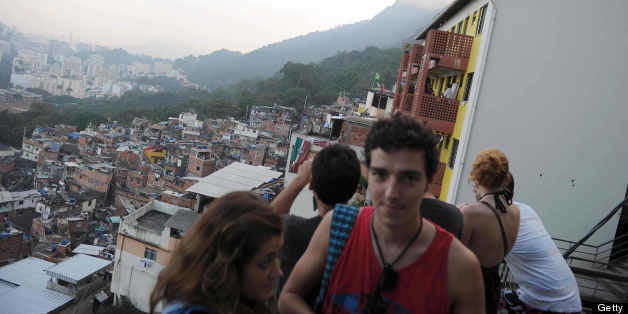
If the delights of Caribbean beaches, European cities or our National Parks have lost their appeal -- you could join the increasing number of tourists choosing to visit some of the world's poorest slums on their vacations.
The trend for tourists from wealthy countries to visit slums in countries like India , Brazil and South Africa has been steadily increasing over the last few years.
The practice, however, has stirred a great deal of controversy, with critics accusing the industry of " turning poverty into entertainment ."
Proponents of the industry argue, however, that ignoring poverty will not make it go away. Harold Goodwin, director of the International Center for Responsible Tourism in Leeds, England told the New York Times "Tourism is one of the few ways that you or I are ever going to understand what poverty means. To just kind of turn a blind eye and pretend the poverty doesn’t exist seems to me a very denial of our humanity."
Some of the most significant questions asked about the ethics of slum tourism are who runs the tours and where do the profits go? BBC News profiled a slum tour business run by Krishna Pujari. His company takes visitors into Dharavi, in Mumbai, India - arguably the biggest slum in Asia.
He explains how his company is a social business with 80% of all profits given to its sister organisation - the charity Reality Gives. "We do we do this because a large percentage of our income is generated through the Dharavi tours and we felt that it was right to put most of the money back," Mr Pujari asserts.
There are however, also large, for-profit travel companies that have begun operating slum tours in order to meet rising demand.
Other issues have presented themselves, like how respectful tour companies and the tourists they bring are to the people and places they are visiting. BBC Travel cites the example of one visitor to the Cape Town, South Africa township of Khayelitsha:
"We stopped several times along the way and talked with local people who were evidently pleased to see us,” he said. But while he was there, chatting with a local woman, a large tour bus drove by, filled with a horde of picture-snapping tourists, as if, the woman remarked, they were on safari.
(Philanthropy Indaba has a list of questions you can use to vet philanthropic tour companies here. )
The motivations of tourists visiting slums are also a source of controversy. A 2010 study by the University of Pennsylvania of tourists visiting the Dharavi slum in Mumbai showed that visitors were motivated mainly by curiosity, as opposed to factors like social comparison, entertainment, education, or self-actualization.
The study also found that common periods for slum tourism are Christmas and Valentine's Day which, critics claim, shows that the tours are to make wealthy westerners feel good about themselves . Many western tourists vacation without family at these times.
Do you think it is appropriate for wealthy travelers to visit slums as a tourist activity? Share your thoughts in the comments.
Editor's note: Links to tour companies in this article do not represent an endorsement on the part of The Huffington Post or the author. They are for informational purposes only.
Support HuffPost
Our 2024 coverage needs you, your loyalty means the world to us.
At HuffPost, we believe that everyone needs high-quality journalism, but we understand that not everyone can afford to pay for expensive news subscriptions. That is why we are committed to providing deeply reported, carefully fact-checked news that is freely accessible to everyone.
Whether you come to HuffPost for updates on the 2024 presidential race, hard-hitting investigations into critical issues facing our country today, or trending stories that make you laugh, we appreciate you. The truth is, news costs money to produce, and we are proud that we have never put our stories behind an expensive paywall.
Would you join us to help keep our stories free for all? Your contribution of as little as $2 will go a long way.
Can't afford to donate? Support HuffPost by creating a free account and log in while you read.
As Americans head to the polls in 2024, the very future of our country is at stake. At HuffPost, we believe that a free press is critical to creating well-informed voters. That's why our journalism is free for everyone, even though other newsrooms retreat behind expensive paywalls.
Our journalists will continue to cover the twists and turns during this historic presidential election. With your help, we'll bring you hard-hitting investigations, well-researched analysis and timely takes you can't find elsewhere. Reporting in this current political climate is a responsibility we do not take lightly, and we thank you for your support.
Contribute as little as $2 to keep our news free for all.
Dear HuffPost Reader
Thank you for your past contribution to HuffPost. We are sincerely grateful for readers like you who help us ensure that we can keep our journalism free for everyone.
The stakes are high this year, and our 2024 coverage could use continued support. Would you consider becoming a regular HuffPost contributor?
The stakes are high this year, and our 2024 coverage could use continued support. If circumstances have changed since you last contributed, we hope you’ll consider contributing to HuffPost once more.
Already contributed? Log in to hide these messages.
Before You Go
Popular in the community, from our partner, huffpost shopping’s best finds, more in life.
We've detected unusual activity from your computer network
To continue, please click the box below to let us know you're not a robot.
Why did this happen?
Please make sure your browser supports JavaScript and cookies and that you are not blocking them from loading. For more information you can review our Terms of Service and Cookie Policy .
For inquiries related to this message please contact our support team and provide the reference ID below.

IMAGES
VIDEO
COMMENTS
Brazil . Brazil's favelas, slum areas that are typically located on the outskirts of big cities like São Paulo, draw 50,000 tourists each year. Rio de Janeiro has by far the most slum tours of any city in Brazil. Slum tourism of Brazil's favelas is encouraged by the federal government. Tours provide an opportunity to understand that these hill communities are vibrant communities, not just ...
⚠️ Note: Please avoid calling favelas Rio de Janeiro slums or Rio slums. Instead, opt for the word communities or urban spaces. 1. Rio De Janeiro: Half-Day Rocinha Favela Walking Tour Most favela tours in Rio happen in the largest favela in Rio, Rocinha. ⭐️ Rating: 4.7 out of 5 Stars | ⏰ Tour time: 4 hours | 📍 Check rates ...
Brazil's favelas are slums with a poor socioeconomic status, most of which sprung up on the outskirts of the country's urban centers in the late 19th century. There are almost 1,000 favelas housing an estimated 1.5 million people in Rio de Janeiro alone, and the densely packed communities often live without reliable electricity, sewage ...
Slum tourism is a tricky subject. Visiting neighborhoods just to gape at residents is akin to visiting a human zoo. It shouldn't be done. ... If you're in Brazil during Carnival season, you can also take tours of or see technical rehearsals at the Cidade de Samba (City of Samba), the complex where the samba schools prepare their parades. ...
The Problem With Favela Tours. Favela tours—or slum tours as they are known in other parts of the world—might seem a relatively recent trend in tourism, but the idea of poverty being marketed ...
Slum tours take place in dozens of countries, primarily in the Global South. Three countries that attract the most slum tourism are Brazil, South Africa, and India. A group of researchers on slum tourism estimated in a 2015 paper that approximately 1 million tourists were taking part in slum tours each year. They noted that about 80% of those ...
Tour Capacity: From 02 to 28 people. Prices: R$ 279,00 per person - For 02 people. R$ 249,00 per person - From 03 to 05 people. R$ 229,00 per person - From 06 to 28 people. * If you are a solo traveler booking this tour, please note that in case no other passenger joins it, we will offer a private tour a day before the trip, for extra R$ 200,00.
5. Make a contribution to the community. Many favela tours offer opportunities for contributions to community projects that you can visit while you're there! For the most part, those who live in favela communities are humble, hard working, and honest. Once you're settled in the tour with your guide, you'll almost feel at home yourself.
This city alone has around 40-50 township tour operators. Slum tourism in Brazil. Slum tourism in Brazil equates to 'favela tours'. Favelas are slums or shanty towns built on the outskirts of major cities across Brazil, and many people visit them for tourist purposes while on holiday in this beautiful country.
Claudio Edinger. Marcos Rodrigo Neves remembers the bad old days in Rocinha, the largest favela, or slum, in Rio de Janeiro. A baby-faced 27-year-old with a linebacker's build and close-cropped ...
Elisa: According to recent statistics, 80% of the world Slum tourism is concentrated in South Africa and Brazil, and almost all Brazilian Slum Tourism is foundin the city of Rio de Janeiro, along with a very small percentage in Paraisópolis, in the city of São Paulo. In spite of the huge number of tourists that every year visit a Brazilian ...
Scenes of the Favela in Rio De Janeiro, Brazil 2021Follow Me on Instagram:https://www.instagram.com/ramitravelyoutubePlease Make Sure To subscribe and Hit th...
Brazilian favelas are home to migrants and the descendants of slaves. And, they are often located on steep, nearly inaccessible mountain slopes.There are man...
The contemporary concept of slum tourism dates back about 30 years, according to Ko Koens, Ph.D., a Dutch academic who specializes in this field and runs slumtourism.net. The South African ...
Rocinha is the largest hill favela in Rio de Janeiro (as well as in Brazil and the second largest slum and shanty town in Latin America).Although favelas are found in urban areas throughout Brazil, many of the more famous ones exist in Rio. Rio's Santa Teresa neighborhood features favelas (right) contrasted with more affluent houses (left). The Christ the Redeemer, shrouded in clouds, is in ...
Tour operators in the Philippines—as well as places like Brazil and India—have responded by offering "slum tours" that take outsiders through their most impoverished, marginalized districts.
An incredible day exploring Brazil's biggest Favela. My Instagram for photos of the trip: https://www.instagram.com/indigo.traveller/Support the children of ...
favela, in Brazil, a slum or shantytown located within or on the outskirts of the country's large cities, especially Rio de Janeiro and São Paulo.A favela typically comes into being when squatters occupy vacant land at the edge of a city and construct shanties of salvaged or stolen materials.. Some have identified the origins of the favela in the Brazilian communities formed by impoverished ...
Brasilia, the capital of Brazil, is a city that was designed and built from scratch in the early 1960s. Its innovative urban planning and modern architecture have made it a UNESCO World Heritage Site. But despite its status as a wealthy and developed city, Brasilia is home to a number of favelas, or slums. The first favela in Brasilia was created in the early 1960s, when the city was being ...
Scenes of the Favela in Rio De Janeiro, Brazil 2022Follow Me on Instagram:https://www.instagram.com/ramitravelyoutubePlease Make Sure To subscribe and Hit th...
Some of the most significant questions asked about the ethics of slum tourism are who runs the tours and where do the profits go? BBC News profiled a slum tour business run by Krishna Pujari. His company takes visitors into Dharavi, in Mumbai, India - arguably the biggest slum in Asia.
Brazil's Afrotourism Push Is Better Late Than Never. Government-led support of Black heritage travel is a first in the country's history. It's a potential turning point for a more inclusive ...
What a day this was, venturing into this favela definitely got the heart racing. -My Instagram for photos of the trip: https://www.instagram.com/indigo.trave...